
Reinventing cosmology: New research puts age of universe at 26.7 -- not 13.7 -- billion years
Our universe could be twice as old as current estimates, according to a new study that challenges the dominant cosmological model and sheds new light on the so-called "impossible early galaxy problem."
"Our newly-devised model stretches the galaxy formation time by a several billion years, making the universe 26.7 billion years old, and not 13.7 as previously estimated," says author Rajendra Gupta, adjunct professor of physics in the Faculty of Science at the University of Ottawa.
For years, astronomers and physicists have calculated the age of our universe by measuring the time elapsed since the Big Bang and by studying the oldest stars based on the redshift of light coming from distant galaxies. In 2021, thanks to new techniques and advances in technology, the age of our universe was thus estimated at 13.797 billion years using the Lambda-CDM concordance model.
However, many scientists have been puzzled by the existence of stars like the Methuselah that appear to be older than the estimated age of our universe and by the discovery of early galaxies in an advanced state of evolution made possible by the James Webb Space Telescope. These galaxies, existing a mere 300 million years or so after the Big Bang, appear to have a level of maturity and mass typically associated with billions of years of cosmic evolution. Furthermore, they're surprisingly small in size, adding another layer of mystery to the equation.
Zwicky's tired light theory proposes that the redshift of light from distant galaxies is due to the gradual loss of energy by photons over vast cosmic distances. However, it was seen to conflict with observations. Yet Gupta found that "by allowing this theory to coexist with the expanding universe, it becomes possible to reinterpret the redshift as a hybrid phenomenon, rather than purely due to expansion."
In addition to Zwicky's tired light theory, Gupta introduces the idea of evolving "coupling constants," as hypothesized by Paul Dirac. Coupling constants are fundamental physical constants that govern the interactions between particles. According to Dirac, these constants might have varied over time. By allowing them to evolve, the timeframe for the formation of early galaxies observed by the Webb telescope at high redshifts can be extended from a few hundred million years to several billion years. This provides a more feasible explanation for the advanced level of development and mass observed in these ancient galaxies.
Moreover, Gupta suggests that the traditional interpretation of the "cosmological constant," which represents dark energy responsible for the accelerating expansion of the universe, needs revision. Instead, he proposes a constant that accounts for the evolution of the coupling constants. This modification in the cosmological model helps address the puzzle of small galaxy sizes observed in the early universe, allowing for more accurate observations.
- Astrophysics
- Cosmic Rays
- Space Telescopes
- Dark energy
- Ultimate fate of the universe
- Galaxy formation and evolution
- Cosmic microwave background radiation
- Andromeda Galaxy
- Spitzer space telescope
Story Source:
Materials provided by University of Ottawa . Original written by Bernard Rizk. Note: Content may be edited for style and length.
Journal Reference :
- R Gupta. JWST early Universe observations and ΛCDM cosmology . Monthly Notices of the Royal Astronomical Society , 2023; DOI: 10.1093/mnras/stad2032
Cite This Page :
Explore More
- Charge Your Laptop in a Minute?
- Caterpillars Detect Predators by Electricity
- 'Electronic Spider Silk' Printed On Human Skin
- Engineered Surfaces Made to Shed Heat
- Innovative Material for Sustainable Building
- Human Brain: New Gene Transcripts
- Epstein-Barr Virus and Resulting Diseases
- Origins of the Proton's Spin
- Symbiotic Bacteria Communicate With Plants
- Birdsong and Human Voice: Same Genetic Blueprint
Trending Topics
Strange & offbeat.
Reinventing cosmology: uOttawa research puts age of universe at 26.7 — not 13.7 — billion years
By Bernard Rizk
Media Relations Officer, External Relations, uOttawa
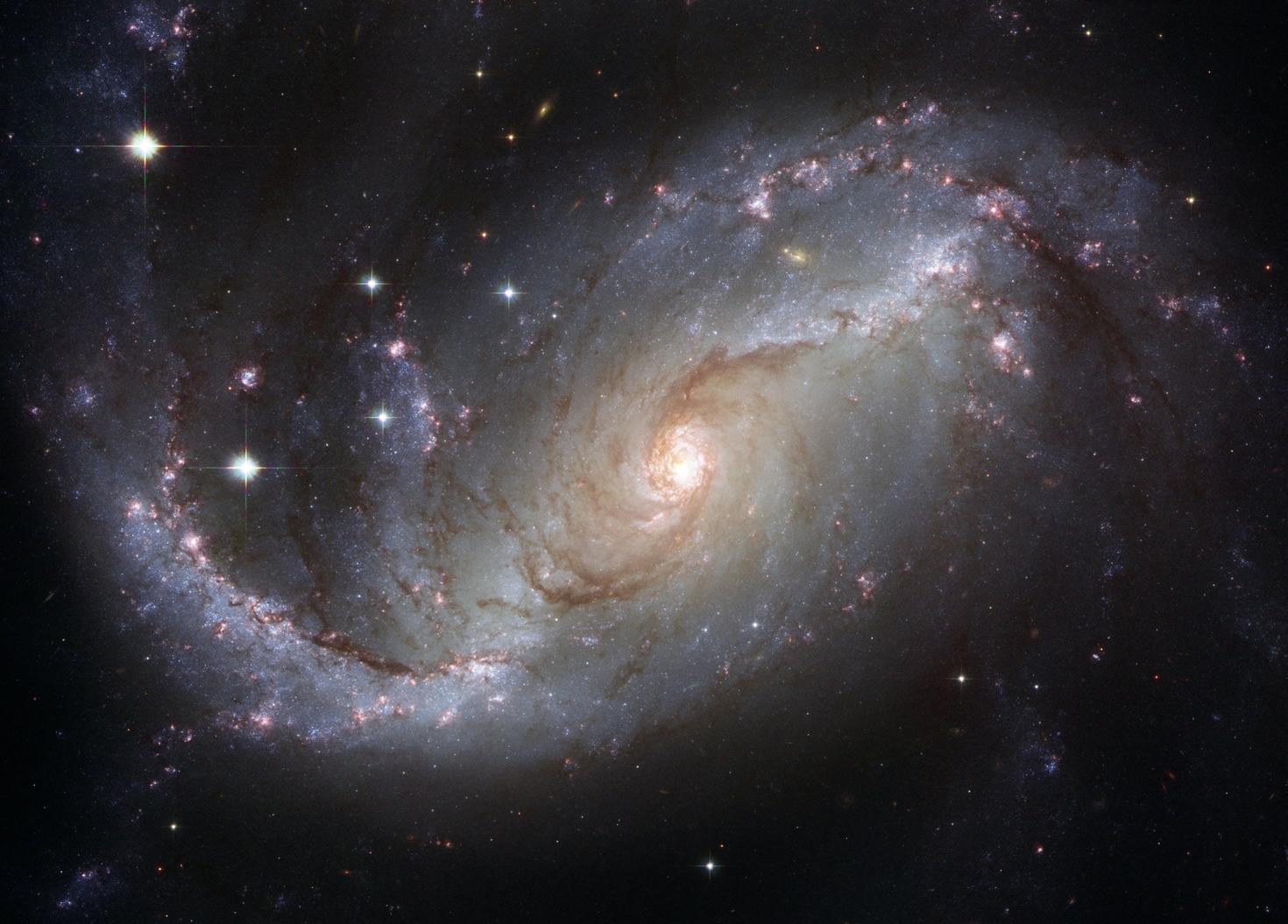
“Our newly-devised model stretches the galaxy formation time by a several billion years, making the universe 26.7 billion years old, and not 13.7 as previously estimated,” says author Rajendra Gupta , adjunct professor of physics in the Faculty of Science at the University of Ottawa.
For years, astronomers and physicists have calculated the age of our universe by measuring the time elapsed since the Big Bang and by studying the oldest stars based on the redshift of light coming from distant galaxies. In 2021, thanks to new techniques and advances in technology, the age of our universe was thus estimated at 13.797 billion years using the Lambda-CDM concordance model.
However, many scientists have been puzzled by the existence of stars like the Methuselah that appear to be older than the estimated age of our universe and by the discovery of early galaxies in an advanced state of evolution made possible by the James Webb Space Telescope . These galaxies, existing a mere 300 million years or so after the Big Bang, appear to have a level of maturity and mass typically associated with billions of years of cosmic evolution. Furthermore, they’re surprisingly small in size, adding another layer of mystery to the equation.
Zwicky’s tired light theory proposes that the redshift of light from distant galaxies is due to the gradual loss of energy by photons over vast cosmic distances. However, it was seen to conflict with observations. Yet Gupta found that “by allowing this theory to coexist with the expanding universe, it becomes possible to reinterpret the redshift as a hybrid phenomenon, rather than purely due to expansion.”

“Our newly-devised model stretches the galaxy formation time by a several billion years, making the universe 26.7 billion years old, and not 13.7 as previously estimated”
Rajendra Gupta
— Adjunct professor of physics in the Faculty of Science at the University of Ottawa
In addition to Zwicky’s tired light theory, Gupta introduces the idea of evolving “coupling constants,” as hypothesized by Paul Dirac. Coupling constants are fundamental physical constants that govern the interactions between particles. According to Dirac, these constants might have varied over time. By allowing them to evolve, the timeframe for the formation of early galaxies observed by the Webb telescope at high redshifts can be extended from a few hundred million years to several billion years. This provides a more feasible explanation for the advanced level of development and mass observed in these ancient galaxies.
Moreover, Gupta suggests that the traditional interpretation of the “cosmological constant,” which represents dark energy responsible for the accelerating expansion of the universe, needs revision. Instead, he proposes a constant that accounts for the evolution of the coupling constants. This modification in the cosmological model helps address the puzzle of small galaxy sizes observed in the early universe, allowing for more accurate observations.
The study, “ JWST early Universe observations and 𝚲 CDM cosmology , ”was published in the Monthly Notices of the Royal Astronomical Society (MNRAS) (Oxford University Press)on July 7, 2023.

- May 26, 2024 | Scientists Decode Deadly Blood Clot Disorder Triggered by COVID Vaccines
- May 26, 2024 | This Week @NASA: Imaging Faraway Planets, X-59 Aircraft Milestone, Dream Chaser Launch Preparation
- May 26, 2024 | New Study Predicts Major Leap in Global Life Expectancy by 2050
- May 26, 2024 | From Black Gold to Green Energy: Mining Rare Earths Alongside Coal
- May 26, 2024 | Dartmouth Researchers Have Mapped How the Brain Regulates Emotions
Cosmic Paradigm Shift: New Research Doubles Universe’s Age to 26.7 Billion Years
By University of Ottawa July 13, 2023
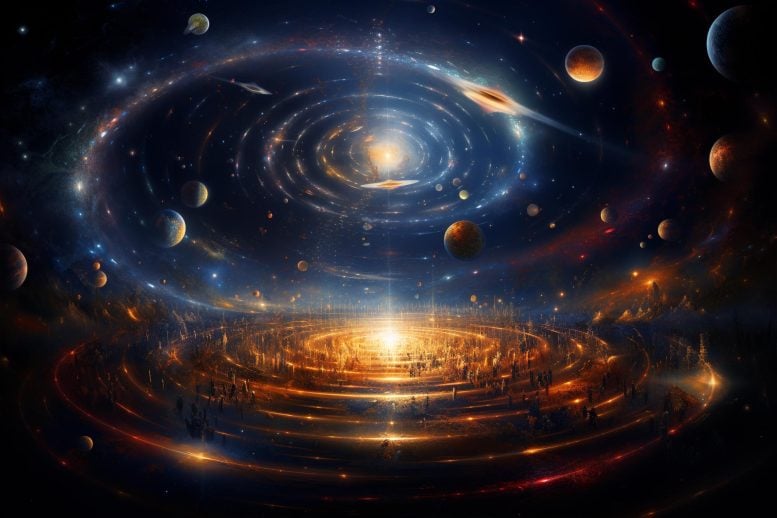
A new study suggests the universe might be 26.7 billion years old, almost double the widely accepted age of 13.7 billion years. The new model, incorporating Zwicky’s tired light theory and Dirac’s evolving coupling constants, could explain the existence of mature, small galaxies formed just 300 million years post-Big Bang and propose a revised interpretation of the cosmological constant.
A new study proposes that the universe may be 26.7 billion years old, challenging the widely accepted estimate of 13.7 billion years based on the Lambda-CDM concordance model.
Our universe could be twice as old as current estimates, according to a new study that challenges the dominant cosmological model and sheds new light on the so-called “impossible early galaxy problem.”
“Our newly-devised model stretches the galaxy formation time by several billion years, making the universe 26.7 billion years old, and not 13.7 as previously estimated,” says author Rajendra Gupta, adjunct professor of physics in the Faculty of Science at the University of Ottawa.

“Our newly-devised model stretches the galaxy formation time by a several billion years, making the universe 26.7 billion years old, and not 13.7 as previously estimated”. Rajendra Gupta — Adjunct professor of physics in the Faculty of Science at the University of Ottawa. Credit: University of Ottawa
For years, astronomers and physicists have calculated the age of our universe by measuring the time elapsed since the Big Bang and by studying the oldest stars based on the redshift of light coming from distant galaxies. In 2021, thanks to new techniques and advances in technology, the age of our universe was thus estimated at 13.797 billion years using the Lambda-CDM concordance model.
The Lambda-CDM (Lambda-Cold Dark Matter) concordance model, also known as the standard model of cosmology, is currently the simplest and most widely accepted model that describes the evolution of the universe from its earliest moments to the present day.
However, many scientists have been puzzled by the existence of stars like the Methuselah that appear to be older than the estimated age of our universe and by the discovery of early galaxies in an advanced state of evolution made possible by the James Webb Space Telescope . These galaxies, existing a mere 300 million years or so after the Big Bang, appear to have a level of maturity and mass typically associated with billions of years of cosmic evolution. Furthermore, they’re surprisingly small in size, adding another layer of mystery to the equation.
Zwicky’s tired light theory proposes that the redshift of light from distant galaxies is due to the gradual loss of energy by photons over vast cosmic distances. However, it was seen to conflict with observations. Yet Gupta found that “by allowing this theory to coexist with the expanding universe, it becomes possible to reinterpret the redshift as a hybrid phenomenon, rather than purely due to expansion.”
“Our newly-devised model stretches the galaxy formation time by several billion years, making the universe 26.7 billion years old, and not 13.7 as previously estimated.” — Rajendra Gupta, Adjunct professor of physics in the Faculty of Science at the University of Ottawa
In addition to Zwicky’s tired light theory, Gupta introduces the idea of evolving “coupling constants,” as hypothesized by Paul Dirac. Coupling constants are fundamental physical constants that govern the interactions between particles. According to Dirac, these constants might have varied over time. By allowing them to evolve, the timeframe for the formation of early galaxies observed by the Webb telescope at high redshifts can be extended from a few hundred million years to several billion years. This provides a more feasible explanation for the advanced level of development and mass observed in these ancient galaxies.
Moreover, Gupta suggests that the traditional interpretation of the “cosmological constant,” which represents dark energy responsible for the accelerating expansion of the universe, needs revision. Instead, he proposes a constant that accounts for the evolution of the coupling constants. This modification in the cosmological model helps address the puzzle of small galaxy sizes observed in the early universe, allowing for more accurate observations.
On July 7, 2023, the study, “JWST early Universe observations and 𝚲CDM cosmology,” was published in the Monthly Notices of the Royal Astronomical Society (MNRAS) by Oxford University Press.
Reference: “JWST early Universe observations and ΛCDM cosmology” by R Gupta, 7 July 2023, Monthly Notices of the Royal Astronomical Society . DOI: 10.1093/mnras/stad2032
More on SciTechDaily
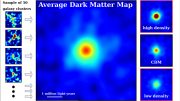
Astronomers Measure the Density of Dark Matter in Galaxy Clusters
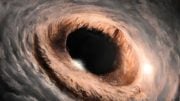
“Cosmological Coupling” – New Evidence Points to Black Holes as Source of Dark Energy
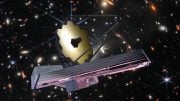
Rethinking the Universe: Astronomers Disturbed by the Unexpected Scale of James Webb’s Galaxies
Dark matter may not exist: these physicists favor of a new theory of gravity.
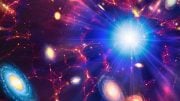
The Mind-Bending Multiverse: Our Universe Is Suspiciously Unlikely To Exist – Unless It Is One of Many
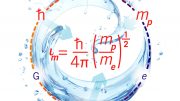
Scientists Discover Fundamental Physical Constants Govern How Runny a Liquid Can Be
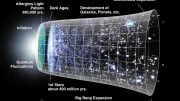
Dark Energy Experiment 16 Years in the Making Could Illuminate Origin, Evolution, Fate of Universe
Our reality may only be half of a pair of interacting worlds, 22 comments on "cosmic paradigm shift: new research doubles universe’s age to 26.7 billion years".
“Tired light”? Does that mean that photons from great distances away are traveling at a slower rate than the speed of light?
According to this article, “tired” light loses energy. Since energy is directly proportional to frequency, this light’s frequency decreases, that is it becomes redder. All electromagnetic waves (light) travel at the same speed through vacuum regardless of frequency.
Man will never understand the universe we can only make observations about it and we will never know the truth about it ,it is GODS AND GODS ALONE man would like to think he knows but he will never know ,only dream of knowing
We said the same thing about lightning. And so we invented a God for it. Now that God is forgotten.
Assigning God to things we don’t understand at this moment is just a renaming of our ignorance. Asked to solve for X, you are saying God = X. You add nothing new.
Who made the god?
We have understood the universe since 2016, when the Planck observations put LCDM on form footing. LCDM explains the space expansion process that makes the universe.
LCDM also handily rejects magic superstitions, such as your comment unnecessarily alludes to, since the entire universe develops in an entirely natural process. There is no longer room for magic of any kind.
Typo. “form footing” = firm footing.
Gary, as you appear to already have your answer to the mystery of the universe, perhaps you should concentrate on the study of theology? Especially if your only response to new research into the present understanding of the universe is a god did it!
Armed with these educated guesses, how many miles of crumbling miles of potholes could have been repaired, how many starving children could have been fed or how much universal healthcare could have paid the best doctors to care for all the people, not just the rich?
We are better off now than we were 100, 1000, 10000 years ago. We live longer, and we now have more roads, so that we may have more potholes in them.
Almost all of our advances came from science. Such advancements need investments. Being shortsighted is not the way to progress.
As for money, far less money is spent on science than on other types of bs. How many trillions have been spent on shoring up banks, just in the US, and just in the last couple of decades? Aside from politically motivated obfuscation, it isn’t hard to reason why allowing banks to freely speculate with publicly insured money would lead to losses to taxpayers. There’s more than enough money to feed everyone, and to fix potholes. But that money isn’t being “wasted” on science.
I’ll disagree with your POIV. With a limited amount of scientific research money, how that money is deployed should be a critical question.
Whatever happened 13 billion years ago in the first 10 seconds of the creation of our reality generates no real modern day gain. Such monies should be redirected to more potentially useful research.
My point is that there are other savings to be had. When trying to save money, it is better to target the $1000 frivolous purchase than the $1 frivolous purchase.
Also, your assertion that learning about the early universe is useless, is unproven. People said the same thing about electricity. Early universe physics is unknown, and knowing that can be useful.
The newly developed detectors of astronomical observatories such as the Webb telescope that the work bases its supposed problems on has routinely been used to save life and health in hospital equipment after. This is is the very definition of societal useful research (besides answering our insatiable curiosity)!
If (I suspect not) we can use science to predict exactly what science results will go into useful technology we can have a discussion on priorities. Who new that researching semiconductor physics would lead to a technology that allows people to cooperate across the globe without massive airplane greenhouse emissions!?
Meanwhile, the investment on science – which gives among the best Return-On-Investment we know – is marginal compared to the money that goes into roads. The amount of starving people was in the latest estimate 54 million then (old estimate), a 0.7 % of 8 billions and far less than those afflicted by malaria – which we can beat with science. And that US has no universal healthcare – as many other nations have – is likely not caused by medical science but its politically caused absence.
Typo: “Who new” = Who knew.
This is a brilliant new view of some fundamental cosmological assumptions. Given that they are largely assumptions, this new formulation seems quite reasonable, and results in a more elegant model of the universe. Presumably, as the Dirac coupling constants interact, energy must be transferred from the EM field, translating EM frequency into some other form of excitation, or excitation in some other field. Dirac also asserted that the more beautiful an expression describing nature might be, the more likely it is to be true. Creation is not only miraculous, it’s exquisitely beautiful, all the more so as we come to understand it better.
Tired light is considered unreasonable. And if it doesn’t respond to all its problems, which the abstract implies, that is also unreasonable.
But on a general note, a hypothesis that suggests any number of free parameters can explain “anything” and so has no explanatory power. (C.f. religion for a similar non-empirical notion of ‘explanation’.) The more free parameters you give a theory, the weaker it is and if in excess such weakening can be considered unreasonable.
So instead of admitting they got Red Shift assumptions wrong (and the nonsensical Dark Matter and Dark Energy that followed to “fix the math”), now we’re just doubling the age of the Universe to explain why things that shouldn’t exist with a Big Bang and expanding universe based on Dark Energy and Dark Matter are being observed to exist in spades. Perhaps the Universe isn’t expanding at all and recycles itself via black holes endlessly.
Our ignorance is based on pure assumptions that Webb is plainly making clear were wrong in the first place, but the establishment (like forbidden archeology) doesn’t want to admit they may have made fundamental mistakes. Ego is at stake so we keep making up more things to force square pegs to fit into round holes.
It’s not only ego at stake. Careers, reputation, status and the ability to gain speaking/book sales are also tied in.
‘It is difficult to get a man to understand something, when his salary depends on his not understanding it.” — Upton Sinclair
@Joso: And you are even worse than Captain Jack, if possible, because you indulge in conspiracy ideation [!]. The only sane response is laughs – lots of LOLs.
Redshift is an observation, not an assumption.
And LCDM is a well tested theory – so not an assumption either – that is not threatened by current observations or this fringe work. It predict what we see and you do not, so your ideas are not even fringe. If you have no predictions, you have nothing but your personal opinion fantasy, while the rest of us has the facts of nature.
Zwicky’s tired light theory was known by Zwicky himself to be impossible by observations due to various problems. Wikipedia:
“The concept was first proposed in 1929 by Fritz Zwicky, who “suggested that if photons lost energy over time through collisions with other particles in a regular way, the more distant objects would appear redder than more nearby ones. Zwicky himself acknowledged that any sort of scattering of light would blur the images of distant objects more than what is seen. Additionally, the surface brightness of galaxies evolving with time, time dilation of cosmological sources, and a thermal spectrum of the cosmic microwave background have been observed—these effects should not be present if the cosmological redshift was due to any tired light scattering mechanism. Despite periodic re-examination of the concept, tired light has not been supported by observational tests and remains a fringe topic in astrophysics.”
Since the paper is paywalled it is impossible for readers to see if all these problems have been solved. From the abstract it is claimed that the work solves the isotropy of the cosmic microwave background and the supernovae – but maybe not galaxy – brightness (distance modulus) time evolution problem. There is a recent high-z (large distance) time dilation measurement that fits LCDM well, and there remains the primary blurring problem that the work may not have solved.
As for the star age and JWST observations that the work attempts to explain, JWST observations are currently not a sufficiently dire problem for LCDM but has implications for early structure formation models, and the star age estimates overlap with LCDM age estimates.
So this is fringe or possibly conflicting with observations.
How convoluted can the logic become? Let’s stick with Occam’s Razor and admit that we don’t know the age of the Universe and that these conflicted observations mean that there’s much more to learn…
Leave a comment Cancel reply
Email address is optional. If provided, your email will not be published or shared.
Save my name, email, and website in this browser for the next time I comment.
How old is our universe? New study says Big Bang might have happened 27 billion years ago

It's a question that has vexed scientists for ages: How old is our universe?
The question is simple enough, but as the years go by it's become apparent that settling on the answer isn't quite so easy. Even today, the matter remains open to discussion as new research could at any moment upend our previous cosmic conception for the age of the billions of galaxies that comprise our universe.
That's what happened last week when a new study was released challenging the long-held notion that our universe is nearly 13.8 billion years old . If the findings of this latest research prove accurate, the Big Bang may have taken place 26.7 billion years ago, making the actual age of the universe nearly twice as old as we thought.
'Internet apocalypse': How NASA's solar-storm studies could help save the web
How the 'impossible early galaxy problem' undermined our understanding of the universe's age
For years, astronomers and physicists have primarily calculated the age of the cosmos by measuring the time elapsed since the Big Bang and studying the oldest stars.
But the study published July 7 in the journal "Monthly Notices of the Royal Astronomical Society" seems to confirm that previous estimates were widely off. What's referred to in the new study as the "impossible early galaxy problem" has long baffled scientists who struggle to reconcile why some galaxies thought to have come into existence long after the Big Bang appear to in fact be much older that the universe's estimated age.
Observed through NASAS' s James Webb Telescope , galaxies and stars like the Methuselah appear to have a a level of maturity and mass typically associated with billions of years of cosmic evolution. It's a notable observation considering the widely-held belief that they came to existence hundreds of millions of years after the Big Bang.
But now, Rajendra Gupta , a theoretical physicist at the University of Ottawa who authored the study, believes he can explain the conundrum that has long puzzled scientists about these ancient galaxies.
“Our newly-devised model stretches the galaxy formation time by a several billion years," Gupta wrote.
How did the study determine the universe could be 26.7 billion years old?
Calculating the time that has passed since the Big Bang is not the only method scientists have used to estimate the age of the universe.
The redshift of light — literally, light from distant galaxies stretched and shifted toward the red part of the spectrum — is what has long helped to inform physicists' estimates of the universe's age. In simple terms, the thought has been that the redshift indicated the distance of stars and galaxies, and hence, the faster they are moving away from Earth.
By estimating the rate at which the stars are moving away, scientists can calculate how fast space is expanding into an infinitely-growing universe.
But the so-called "tired light theory" that originated in 1929 with Swiss astronomer Fritz Zwicky offered an alternative explanation: Perhaps the redshift we see isn't due to galaxies moving away from us. Instead, Zwicky's hypothesis was that it might be because light loses its energy and shine after traveling a long distance.
Alien technology? Harvard professor finds fragments that could be of otherworldly origin
Gupta proposes that if we allow Zwicky's theory to coexist with the idea of an expanding universe, we can reinterpret the redshift as a hybrid of both of these phenomena and thus arrive at an even more accurate age estimate of the universe.
And Gupta goes even further in the study, introducing the fundamental physics idea from English theoretical physicist Paul Dirac that coupling constants govern the interactions between particles.
What does that mean? If these constants evolve, then the time it takes for the early galaxies observed in the Webb telescope to form extends from a few hundred million years to several billion years.
Better put, it would offer an explanation for the advanced level of development and mass observed in the previously puzzling early galaxies.
Eric Lagatta covers breaking and trending news for USA TODAY. Reach him at [email protected] and follow him on Twitter @EricLagatta.


- News Releases
Reinventing cosmology: uOttawa research puts age of universe at 26.7 — not 13.7 — billion years
University of Ottawa
image: “Our newly-devised model stretches the galaxy formation time by a several billion years, making the universe 26.7 billion years old, and not 13.7 as previously estimated”. Rajendra Gupta — Adjunct professor of physics in the Faculty of Science at the University of Ottawa view more
Credit: University of Ottawa
Our universe could be twice as old as current estimates, according to a new study that challenges the dominant cosmological model and sheds new light on the so-called “impossible early galaxy problem.”
“Our newly-devised model stretches the galaxy formation time by a several billion years, making the universe 26.7 billion years old, and not 13.7 as previously estimated,” says author Rajendra Gupta , adjunct professor of physics in the Faculty of Science at the University of Ottawa.
For years, astronomers and physicists have calculated the age of our universe by measuring the time elapsed since the Big Bang and by studying the oldest stars based on the redshift of light coming from distant galaxies. In 2021, thanks to new techniques and advances in technology, the age of our universe was thus estimated at 13.797 billion years using the Lambda-CDM concordance model.
However, many scientists have been puzzled by the existence of stars like the Methuselah that appear to be older than the estimated age of our universe and by the discovery of early galaxies in an advanced state of evolution made possible by the James Webb Space Telescope . These galaxies, existing a mere 300 million years or so after the Big Bang, appear to have a level of maturity and mass typically associated with billions of years of cosmic evolution. Furthermore, they’re surprisingly small in size, adding another layer of mystery to the equation.
Zwicky’s tired light theory proposes that the redshift of light from distant galaxies is due to the gradual loss of energy by photons over vast cosmic distances. However, it was seen to conflict with observations. Yet Gupta found that “by allowing this theory to coexist with the expanding universe, it becomes possible to reinterpret the redshift as a hybrid phenomenon, rather than purely due to expansion.” In addition to Zwicky’s tired light theory, Gupta introduces the idea of evolving “coupling constants,” as hypothesized by Paul Dirac. Coupling constants are fundamental physical constants that govern the interactions between particles. According to Dirac, these constants might have varied over time. By allowing them to evolve, the timeframe for the formation of early galaxies observed by the Webb telescope at high redshifts can be extended from a few hundred million years to several billion years. This provides a more feasible explanation for the advanced level of development and mass observed in these ancient galaxies.
Moreover, Gupta suggests that the traditional interpretation of the “cosmological constant,” which represents dark energy responsible for the accelerating expansion of the universe, needs revision. Instead, he proposes a constant that accounts for the evolution of the coupling constants. This modification in the cosmological model helps address the puzzle of small galaxy sizes observed in the early universe, allowing for more accurate observations.
The study, “ JWST early Universe observations and 𝚲CDM cosmology ,”was published in the Monthly Notices of the Royal Astronomical Society (MNRAS) (Oxford University Press)on July 7, 2023.
Monthly Notices of the Royal Astronomical Society
10.1093/mnras/stad2032
Subject of Research
Not applicable
Article Title
JWST early Universe observations and ΛCDM cosmology
Article Publication Date
Disclaimer: AAAS and EurekAlert! are not responsible for the accuracy of news releases posted to EurekAlert! by contributing institutions or for the use of any information through the EurekAlert system.
Original Source
Translations.

- Level : university

UNIVERSITY OF OTTAWA Reinventing cosmology: uOttawa research puts age of universe at 26.7 — not 13.7 — billion years
"Our newly-devised model stretches the galaxy formation time by a several billion years, making the universe 26.7 billion years old, and not 13.7 as previously estimated," says author Rajendra Gupta , adjunct professor of physics in the Faculty of Science at the University of Ottawa.
For years, astronomers and physicists have calculated the age of our universe by measuring the time elapsed since the Big Bang and by studying the oldest stars based on the redshift of light coming from distant galaxies. In 2021, thanks to new techniques and advances in technology, the age of our universe was thus estimated at 13.797 billion years using the Lambda-CDM concordance model.
However, many scientists have been puzzled by the existence of stars like the Methuselah that appear to be older than the estimated age of our universe and by the discovery of early galaxies in an advanced state of evolution made possible by the James Webb Space Telescope north_east external link . These galaxies, existing a mere 300 million years or so after the Big Bang, appear to have a level of maturity and mass typically associated with billions of years of cosmic evolution. Furthermore, they're surprisingly small in size, adding another layer of mystery to the equation.
Zwicky's tired light theory proposes that the redshift of light from distant galaxies is due to the gradual loss of energy by photons over vast cosmic distances. However, it was seen to conflict with observations. Yet Gupta found that "by allowing this theory to coexist with the expanding universe, it becomes possible to reinterpret the redshift as a hybrid phenomenon, rather than purely due to expansion."
STUDY + COSMOLOGY "Our newly-devised model stretches the galaxy formation time by a several billion years, making the universe 26.7 billion years old, and not 13.7 as previously estimated" Rajendra Gupta, Adjunct professor of physics in the Faculty of Science at the University of Ottawa
In addition to Zwicky's tired light theory, Gupta introduces the idea of evolving "coupling constants," as hypothesized by Paul Dirac. Coupling constants are fundamental physical constants that govern the interactions between particles. According to Dirac, these constants might have varied over time. By allowing them to evolve, the timeframe for the formation of early galaxies observed by the Webb telescope at high redshifts can be extended from a few hundred million years to several billion years. This provides a more feasible explanation for the advanced level of development and mass observed in these ancient galaxies.
Moreover, Gupta suggests that the traditional interpretation of the "cosmological constant," which represents dark energy responsible for the accelerating expansion of the universe, needs revision. Instead, he proposes a constant that accounts for the evolution of the coupling constants. This modification in the cosmological model helps address the puzzle of small galaxy sizes observed in the early universe, allowing for more accurate observations.
The study, " JWST early Universe observations and CDM cosmology north_east external link , "was published in the Monthly Notices of the Royal Astronomical Society (MNRAS) (Oxford University Press)on July 7, 2023
For more information

LOGIN

Today's most popular news
Fraser institute new fraser institute rankings of ontario secondary schools, grande prairie public school division ola oladele announced as new associate superintendent - business services, northlands college college collaborates with world alliance for micro credentials to advance global skills recognition, vancouver island university new research centre focuses on quality of life improvements for people affected by trauma and mental health issues, bluewater district school board bluewater district school board announces the administrative placements, centre de services scolaire du littoral computer technician, principal class, centre de services scolaire du littoral school principal, centre de services scolaire du littoral mathematics and science teacher, cegep heritage college teachers - computer science (fall 2024).

Réseau Info Éducation AMEQ en ligne Municipal Information Network (MIN) Réseau d'Information Municipale (RIMQ)
- 475 Montée Masson # 102 Mascouche, QC, CA J7K 2L6
- Phone: 450-471-7599 - 888-504-0072
- Email: [email protected]
Private zone
- Subscription details
- Archived documents
- Transferred documents
- Contact list
- Forgot your password
- Privacy policy
- Change Cookie Setting
Send us a press release
Consult the archives
Newsletter archives
Most recent Newsletter
Subscription
- Create your user account and receive the newsletter
- Unsubscribe from daily newsletter
- Forgot your password
- Access your Private Zone
- Need help ?
- UNSUBSCRIBE

This website uses cookies
Space-Scientist

- About Universe
- James Webb Space Telescope
Reinventing cosmology: New research puts age of universe at 26.7 — not 13.7 — billion years

The age of our universe could be twice as old as previously estimated, according to a new study that challenges the dominant cosmological model and sheds new light on the so-called “ impossible early galaxy problem .” The study, conducted by Rajendra Gupta, adjunct professor of physics in the Faculty of Science at the University of Ottawa, proposes a newly-devised model that stretches the galaxy formation time by several billion years. This makes the universe 26.7 billion years old instead of 13.7 billion years as previously estimated.
For years, astronomers and physicists have calculated the age of our universe by measuring the time elapsed since the Big Bang and by studying the oldest stars based on the redshift of light coming from distant galaxies. In 2021, thanks to new techniques and advances in technology, the age of our universe was thus estimated at 13.797 billion years using the Lambda-CDM concordance model.
However, many scientists have been puzzled by the existence of stars like Methuselah that appear to be older than the estimated age of our universe and by the discovery of early galaxies in an advanced state of evolution made possible by the James Webb Space Telescope. These galaxies exist a mere 300 million years or so after the Big Bang and appear to have a level of maturity and mass typically associated with billions of years of cosmic evolution. Furthermore, they’re surprisingly small in size, adding another layer of mystery to the equation.
Gupta’s study proposes that Zwicky’s tired light theory can coexist with the expanding universe. This theory proposes that redshift is due to photons losing energy over vast cosmic distances. Gupta found that “ by allowing this theory to coexist with the expanding universe, it becomes possible to reinterpret the redshift as a hybrid phenomenon, rather than purely due to expansion .” In addition to Zwicky’s tired light theory, Gupta introduces the idea of evolving “coupling constants,” as hypothesized by Paul Dirac. Coupling constants are fundamental constants that govern how particles interact with each other.
This new study challenges current cosmological models and provides new insights into how galaxies form and evolve over time.
R Gupta. JWST early Universe observations and ΛCDM cosmology. Monthly Notices of the Royal Astronomical Society, 2023; DOI: 10.1093/mnras/stad2032
Post a Comment
Popular posts.
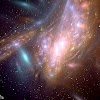
A new map of 4.4 million galaxies has been unveiled by astronomers!

New study suggests repeated signals from the center of the Milky Way could be from extraterrestrial life

The biggest cosmic explosion ever seen has left astronomers scratching their heads
- about universe 3
- Alien Life 1
- Asteroids 1
- Astronomy 28
- Black Hole 4
- Dark matter 1
- James Webb Space Telescope 12
- Milky Way 1
- speed of light 1
- stephen hawking 1
Menu Footer Widget
- Privacy Policy
- Newsletters
Is the universe twice as old as we thought?
Evrim Yazgin
Evrim Yazgin has a Bachelor of Science majoring in mathematical physics and a Master of Science in physics, both from the University of Melbourne.
James Webb Space Telescope (JWST) discoveries of highly evolved galaxies only 325 million years after the Big Bang is expected to have occurred have driven one cosmologist to a radical new theory: the universe is much older than we think.
Current estimates place the Big Bang 13.8 billion years ago. University of Ottawa adjunct professor Rajendra Gupta has calculated that it is, in fact, 26.7 billion years old – nearly twice as old as the current accepted model.
But experts warn us to be cautious: “Extraordinary claims require extraordinary evidence,” says one cosmologist.
How old do you think I am?
Guessing the age of things is difficult at the best of times.
Tree rings can tell you the age of trees that have grown in temperate climates. Radioisotope analysis can give a relatively accurate picture of how old certain fossils or rocks are on Earth. But determining the age of the universe is a completely different matter.
How did cosmologists come to calculate the universe’s age as 13.8 billion years old in the first place?
“Our best estimates for the age of the universe are based on observations of the cosmic microwave background radiation (CMB) and measurements of the universe’s expansion through Hubble’s Law,” says Dr Michael Cowley from the Queensland University of Technology told Cosmos .
CMB is relic radiation from the Big Bang dating back to just 300,000 years after the universe was born. It permeates the universe and is the earliest observable radiation in the cosmos. Cowley explains that a complicated process of analysing temperature fluctuations in the CMB allows cosmologists to determine the age of the universe .
Hubble’s Law, Cowley explains, was established by astronomer Edwin Hubble in the 1920s. It relates the distances and velocities of galaxies and helps determine the rate of the universe’s expansion, called the Hubble constant.
“By extrapolating this expansion backward, we can estimate the time of the Big Bang,” Cowley says.
Tired photons
Gupta’s new model, described in a paper published in the Monthly Notices of the Royal Astronomical Society takes a completely different approach.
James Webb Space Telescope: A year on, what have we learned?
A theory, known as “tired light” (first suggested by physicist Fritz Zwicky in 1929) is employed to explain the redshifting of photons from distant galaxies. In current cosmology, redshift is the stretching of photons caused by the expansion of the universe, akin to the experience we have when an ambulance siren drops in pitch as it drives away from the listener.
Tired light theory suggests that photons gradually lose energy over cosmic distances. Though it conflicts with observations, Gupta says that “by allowing this theory to coexist with the expanding universe, it becomes possible to reinterpret the redshift as a hybrid phenomenon, rather than purely due to expansion.”
A galactic problem, or not?
The existence of galaxies in the first few million years of the universe is sometimes referred to as the “impossible early galaxy problem.”
Gupta also introduces new physical constants that change over time, extending the existence of early galaxies in the universe from the first few hundred million years of the cosmos to several billion years, helping him to conclude the universe may actually be nearly 28bn years old. .
Cowley says estimates of the age of the universe are challenged by physics and observation.
“Our current understanding of the universe suggests galaxies take time to develop, by accumulating stars and building structures through various processes,” Cowley explains. “However, new observations with cutting-edge telescopes (like the JWST) have revealed mature galaxies at a time when the universe was relatively young. Their existence challenges our current understanding of how galaxies form and evolve over cosmic time.”
A much simpler explanation for the existence of these galaxies may just be that we don’t fully understand galactic evolution in the early universe.
“‘Impossible’ is far too strong,” says Dr Luke Barnes from Western Sydney University, who believes Gupta is probably wrong. “We have unanswered questions about how galaxies could have formed as early as we see them in JWST observations. But nothing about the situation is impossible.”
Professor Tamara Davis from the University of Queensland agrees.
“There was an initial burst of excitement over seeing so many early galaxies from JWST, which is exactly what we’d hoped JWST would see,” Davis says. “It is a bit of a puzzle of how exactly do those structures form.”
Cosmologists not yet convinced
Experts don’t believe Gupta’s theory is going to cause a paradigm shift in cosmology any time soon.
“Our current model of the Big Bang and the expansion of the universe is supported by a wealth of observational evidence and has explained various cosmological phenomena,” Cowley says. “For this new research to gain traction, I believe further research and theoretical developments would be required.”
Davis points out that the Standard Model of Cosmology which states the Big Bang occurred about 13.8 billion years ago has used measurements “through a combination of a whole bunch of different probes.” These include analysing data from supernovae, galaxy distribution and measurement of the universe’s expansion.
Gupta’s paper, on the other hand, “only considers supernova data, which these days is really just a no-no,” Davis says. “Extraordinary claims require extraordinary evidence. You have to go and test it, and test it in different ways.”
While Gupta’s new theory has received much attention in the media, Barnes puts this down to “irresponsible hype,” and questions the science behind the paper.
Barnes adds that “there is a basic set of cosmological observations that any contender for the Big Bang’s title needs to explain. That’s how your new theory buys its ticket. Solving a new puzzle doesn’t count for much if we don’t know whether it can explain established data.”
SCINEMA runs from August 1 to August 31 every year. Register now to be part of the festival and watch the films for free. REGISTER NOW .
Originally published by Cosmos as Is the universe twice as old as we thought?
Please login to favourite this article.
- COP Climate Change
- Coronavirus (COVID-19)
- Cancer Research
- Diseases & Conditions
- Mental Health
- Women’s Health
- Circular Economy
- Sustainable Development
- Agriculture
- Research & Innovation
- Digital Transformation
- Publications
- Academic Articles
- Health & Social Care
- Environment
- HR & Training
- Health Research
- North America Analysis
- Asia Analysis
- Our Audience
- Marketing Information Pack
- Prestige Contributors
- Testimonials

- North America
- Open Access News
- Research & Innovation News
New research reveals age of universe estimated to be 26.7 billion years old
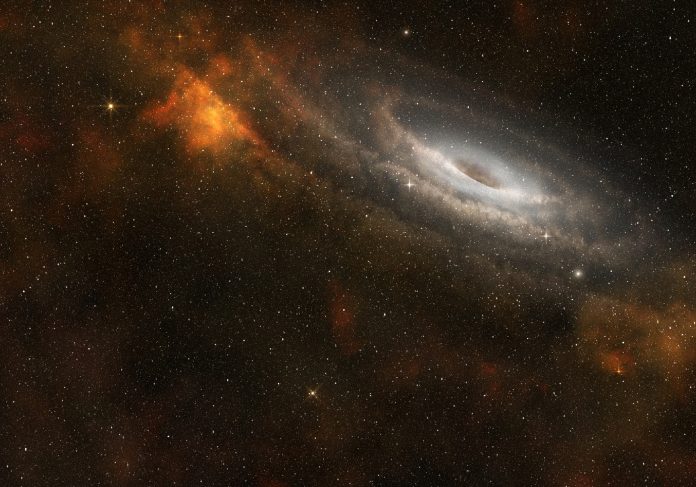
Challenging the current cosmological model, a new study published in the Monthly Notices of the Royal Astronomical Society suggests that the age of universe may be nearly twice as old
This research around studying space and our universe sheds light on the “impossible early galaxy problem.”
Age of the universe estimated at 26.7 billion years
According to the study’s author, Rajendra Gupta, a physics professor at the University of Ottawa, their newly-devised model indicates that the universe is 26.7 billion years old, significantly older than the previous estimate of 13.7 billion years.
The mystery of early galaxies and methuselah stars
Astronomers and physicists have traditionally determined the universe’s age by measuring the time since the Big Bang and studying the oldest stars based on redshift observations.
However, the existence of stars like Methuselah, which appear older than the universe’s estimated age, and the discovery of early galaxies with advanced evolutionary characteristics have perplexed scientists.
These early galaxies, observed only 300 million years after the Big Bang, exhibit levels of maturity and mass typically associated with billions of years of cosmic evolution, presenting a significant puzzle.
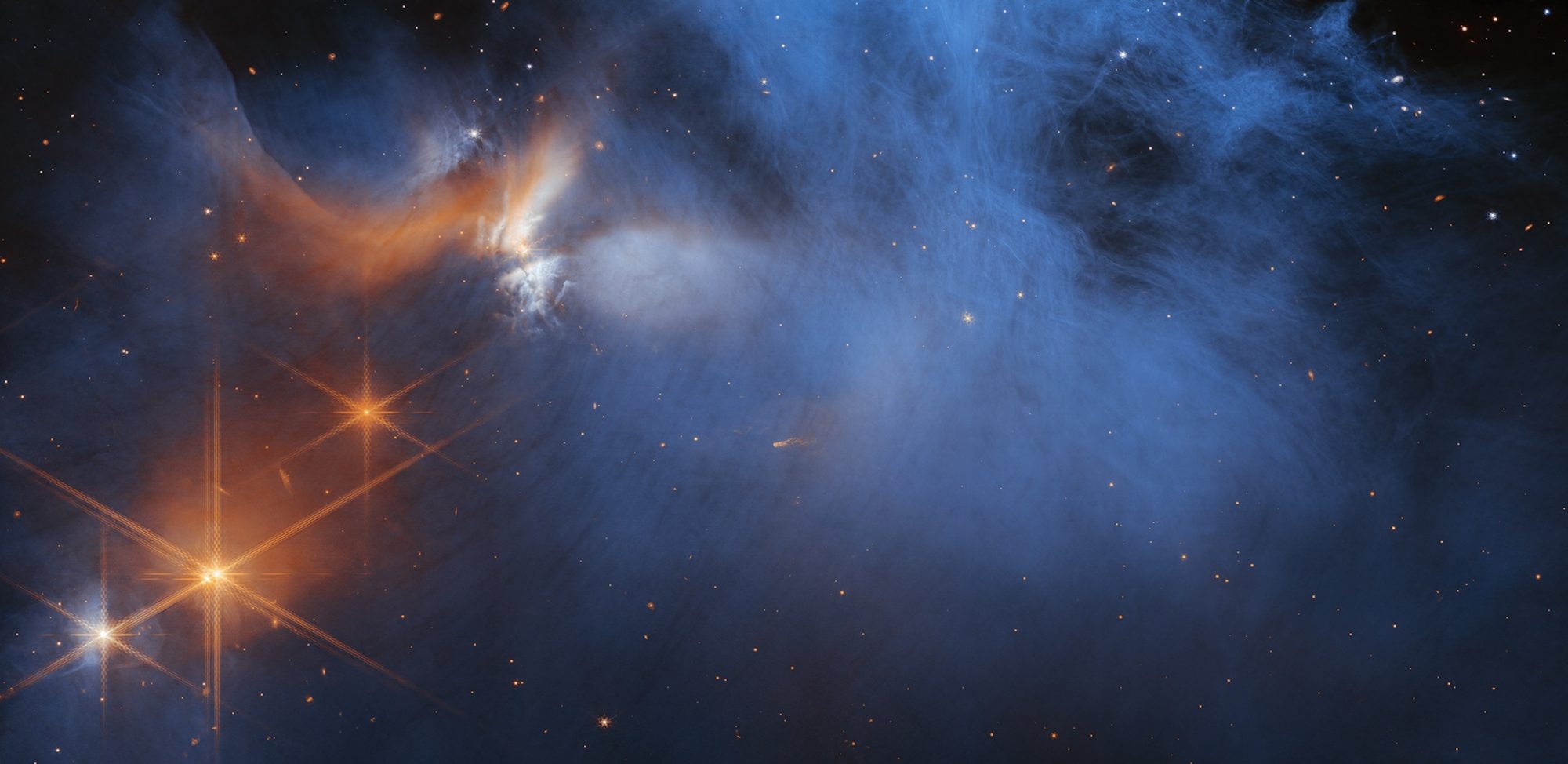
Zwicky’s tired light theory and coupling constants
To address these challenges, Gupta introduces Zwicky’s tired light theory, which proposes that the redshift of light from distant galaxies is caused by the gradual energy loss of photons over vast cosmic distances.
By allowing this theory to coexist with the expanding universe, Gupta suggests a hybrid interpretation of redshift that explains the observations more accurately.
Additionally, Gupta incorporates the concept of evolving “coupling constants,” as theorised by Paul Dirac, which are fundamental physical constants governing particle interactions.
By allowing these constants to vary over time, the formation timeframe for early galaxies observed by the James Webb Space Telescope can be extended from a few hundred million to several billion years.
This provides a plausible explanation for the advanced development and mass observed in these ancient galaxies.
Revising the cosmological constant
Gupta proposes that the traditional interpretation of the “cosmological constant,” responsible for the universe’s accelerating expansion, needs revision.
Instead, he suggests a constant that accounts for the evolution of coupling constants. This modification in the cosmological model helps solve the puzzle of small galaxy sizes observed in the early universe, allowing for more accurate observations.
Editor's Recommended Articles
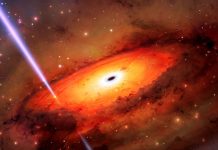
RELATED ARTICLES MORE FROM AUTHOR
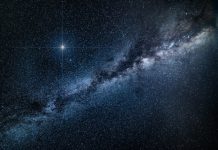
Investigating collapsing stars that mysteriously vanish

NASA collaborates with industry to design sustainable jet engine core


AI reveals differences in male and female brain structures

Supercomputing: UK boosts research access with EuroHPC £770 million membership
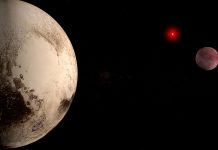
Astrophysicist discovers fiery exoplanet with NASA’s TESS

Horizon Europe allocates €163.5 million for green mobility research projects
24 comments.
ok, look I’m no scientist and I don’t really claim to be of any religion but, and this is going to sound a bit crazy I have a stupid theory that kind of answers all our questions about this problem. I know that according to the bible and the book of genesis God created the universe. When exactly I can’t really say, but he did say that he created the heavens and earth all at the same time. Now, for the sake of argument lets say he did. That means he created all the galaxies and other stuff in an instant. ( impossible scientifically I know ). But lets say he did. Now in the aeons of time and space movement of matter will occur due to gravitational interaction of matter black holes and other stuff. Given that this movement has had a very long time to develop I would imagine that there would be plenty of time for things to get very far away. ( billions of years… ). What I’m saying is that what we are looking at when we see these galaxies ARE the perhaps some of the original galaxies that God, or who-ever made the universe. Of course we don’t know if they are…they could be much older than that.
Can you provide repeatable evidence that this “god” character is real? If not… Why would I have any reason to believe you? At all?
Fact: The universe exists. Fact: Every single thing inside the universe is the EFFECT of a CAUSE The only logical conclusion: The universe itself was created.
Just keep in mind that just because a human mind doesn’t perceive, understand, or see the creator behind the scenes, doesn’t negate the fact that there must BE a creator.
Please reply if you have a compelling, logical rebuttal.
Does the universe exist?
You’re simply saying that because we don’t know how everything in the universe happened it must have been god. People have been using that same argument since the Stone Age. Imagine trying to explain to a cave man how lightning and thunder actually works. Every time there’s a door science hasn’t been able to unlock yet people say “that’s unknowable because it’s just god back there”. God is just the simplest and easiest answer to these questions. The more we understand about the universe the more it becomes apparent that it is never a simple or easy answer. The universe is unfathomably large and perplexing and the human mind is not nearly big enough to probably ever understand it all. But I would think that after thousands of years of people using god to explain the unexplainable, only to inevitably have it explained, that people would stop falling back on this trope.
“The universe is unfathomably large and perplexing and the human mind is not nearly big enough to probably ever understand it all.”
Yet folks like you can “know” that God does not exist? Really?
A creator? Are you assuming a conscious creator? Some intention? Or just that some cause lead to another?
Let me give you another problem. Does the universe even exist? How we define existence? What about the fact that everything including atoms are 99.99 precent void?
The creation of the universe may be the effect of another cause that doesn’t require a creator. True enough, cause and effect seems to be consistent, but you made a link from cause to creator that doesn’t seem justified.
How does a creator decide to create without a constant such as entropy? Which by all accounts may be the reason we experience ‘time” as we know it. Without time, a creator cannot create, without a universe, there is no time, ergo, without a universe, there is no creator.
The logical conclusion of all of this is that the universe exists simply because it has to.
Please don’t try and bring an imaginary sky fairy into any serious scientific discussion
Find a massive problem with the fudge that is the standard model, then fudge the age of the universe, then expect that everything is okay! It’s NOT! Making stuff up, to solve ‘problems’ IS NOT Science! I propose a new universal constant, the fudge constant! It’s the value of the lengths scientists will go to, in order to pretend their holy grail is perfect. The fudge factor multiplied by amount of scientists who only care about funding = the fudge constant!!!
Solving problems in a theory and then testing the model using the stuff they “made up”, is the basis of all science.
You don’t have a clue.
Wow! Don’t be a tit! This is just a theory… that’s how science discovery works. Many theoretical scientists with intellects much bigger than either of ours will come up with different ideas of how to explain something we don’t understand, and then its the job of the engineers and mathematicians to create ways to test these ideas to see whether or not they are plausible. This is just a theory, which if correct could predict that the universe is much older than previously thought. No need to get all bitchy about it lol. Scientists have never said with any absolution that the universe is 13.8 billion years old, this is just the number that is churned out when using the best model available to them. I’m struggling to see how anyone can find a way to have a problem with this article.
Suspicious that the new number is roughly twice the original 13.7 billion years. Could it be that they simply didn’t factor in that WE are moving away at roughly the rate as what is being measured?
Prior to the very recent observation and confirmation of time dilation in redshifted light, and one entirely consistent with the stretching of space, there could have been room for something like a tired light hypothesis (tired light would not be subject to time dilation), but this now seems rather well excluded. In fact, we can now for the first time take the stretching of space, divide it by the measured time dilation, and compute a rough age for the universe in this new way, too. And guess what, if we do so, it’s still roughly the same ~13 billion years range, too. As for making up a “belief” that constants must have somehow been “different” and hence must have changed over time simply because that better fits your already desired outcome, that’s not science either.
I think the universe is infinite in time and space. Big Bangs happen regularly.
I Agree I don’t understand why everyone is so latched on to the Universe having a beginning and ending. I believe it has and always will be here, there is no real time it’s an illusion how else could 2 properly functioning clocks tick at a different speed due to their location to gravitional mass. Also how can we use time to evaluate the age of the universe when the Earth has not always revolved around the Sun. There is no time it always Now
It is an emerging theory. It will need to be tested and tossed around. it may be Supportable. it may be proved wrong. It does at least attempt to answer the question about extremely developed and mature galaxies etc existing so soon after the current estimated big bang date.
It would be interesting to find out what happens to the energy of photons that is so called lost in Tired Light theory? Conservation of energy would seem to state that energy is transferred or transformed or stored but not lost. We still don’t know what dark energy and dark matter are or how they are formed
It’s good to hear debate around this, though I lack in the depth of knowledge to add to the debate. I’ve never got the need for a “beginning” of a universe or thought it made sense. Or is that just my lack of ability to comprehend a time before matter existed?
It always seemed likely that what we can see is limited in some way, rather than not existing before the earliest light we can see.
26 billion years of earth time?with this gravity? Is it 26 billion years for a person in another Galaxy and maybe near a dark hole and with different gravity and different experience of passing time? What is this announced time based on?
A really interesting time for cosmology. Taking the red shift and working back came up with 13.8 billion years. Well that doesn’t work anymore so what now. Fudging the speed of light or the fundamental laws of physics to patch the method are a shot way out in left field. Once we do that we enter into a fantasy where anything is possible. Bright people are trying to come up with a testable new explanation.
Or it is a political agenda or preparation for the coming space age of competition, they are trying to manipulate the entire science of cosmology for their own benefit.
I don’t understand is why there is this apparent necessity in the human mind that there ever needed to be a beginning or an end to the universe; is the entire body of human kind’s accumulated scientific knowledge, really based upon observations of its own manifestation? We; for some childish reason can’t accept that the universe was always here, and always will be? We see an expansion; but was it really the beginning of everything, or did something really big, blow up in our neighborhood many long years ago? So, for the strange observation that some galaxies appear to have existed prior to the “Big Bang”, shouldn’t come as a surprise to anyone; those, apparently, were the galaxies that were far enough away from the blast site, that they survived the blast wave, what all that might have consisted of. As concerns black holes, we know that in the absence of countering forces, there’s an upper limit to how much mass can accumulate at a particular volume before it collapses into a black hole; but, is the opposite of that, also, possibly be true? Is there an upper limit to black hole mass before it becomes unstable and explodes? I’m not all that into math, but it seems that, like everything else in this universe, that there should be an upper limit. So, what would be the multiplicative inverse of planks constant if expressed as either mass and or energy? Since, supposedly, planks constant describes the smallest possible event in the universe, the the multiplicative inverse should describe the largest possible event; would that describe what happens when a black hole goes beyond that value? And; since, effectively, gravity is the equivalent of space-time distortion; couldn’t we figure out when a black hole would become unstable as a sort of a four dimensional geometric mathematical problem that our computers should be able to solve without too much difficulty? Not that it really matters all that much one way or the other, because it looks like our political leaders are hell bent on killing us all, because of some sort mental illness, genetically caused, or otherwise; the species is really sad sack; that the majority of the Earth’s population has no control over the destiny of their species, because, of the psychopathic behaviors of a very small number of its members; apparently, either no interest in stopping its inevitable extinction, or no ability to stop it. Science is nice, but if you all stand by and watch things like the genocide in the Ukraine go down, that the Western psychopathic leaders call a war; you’re all doomed to extinction, and probably very soon at that. I love science, but, as a species, humans are some really dumb animals.
This translation by Google, I hope it conveys what I want.. In the religion of Islam, the Creator says that contemplating the creation of the heavens, the creation of the earth, and the creation of the human soul will lead to human thought going astray. And far from the truth. Therefore, the Creator explained to us the events of creation with extreme precision and their stages, and Muslims who are close to the religion teach them. They must reveal it to the world so that they know that the Holy Qur’an is the truth revealed by the Creator of the universe. One of the most evidences is that the Earth is the oldest body in the universe. Scientists will find out soon
The Problem is, when someone mentions God, people go on the defensive, & therefore go to extremes in their Responses & comments. I’m a Christian. I also believe in the Scientific Standard Model of the universe. ( even though it has been tweaked over the years). What people forget is, that, on a universal scale, we have only existed for a brief flicker. This leaves plenty of time for a higher being, like God to have done something. Looking at the Cosmos Objectively, despite the fact that it could have come into existence by itself, no one can really prove one way or the other.
LEAVE A REPLY Cancel reply
Save my name, email, and website in this browser for the next time I comment.
Related Academic Articles

Transfer RNA as a written molecular history of the life transition...

Train derailment in East Palestine, Ohio: The toxic risks of transporting...

Thermodynamics of hadronization: The rotating lepton model explains key CERN experiments
Follow open access government, latest publication.

Open Access Government April 2024
- Terms & Conditions
- Privacy Policy
- GDPR Privacy Policy
- Marketing Info Pack
- Fee Schedule
New research puts age of universe at 26.7 billion years, nearly twice as old as previously believed
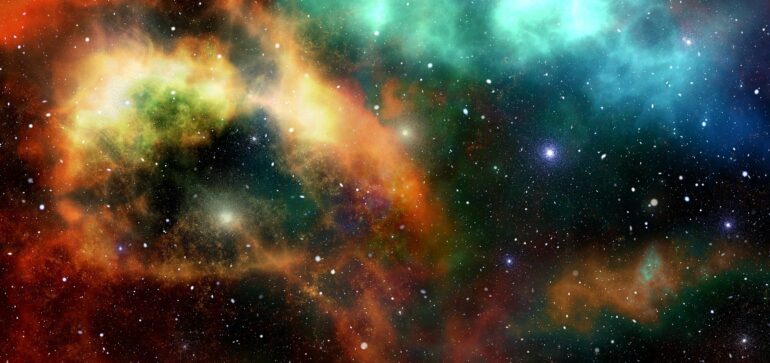
Our universe could be twice as old as current estimates, according to a new study that challenges the dominant cosmological model and sheds new light on the so-called “impossible early galaxy problem.”
The work is published in the journal Monthly Notices of the Royal Astronomical Society .
“Our newly-devised model stretches the galaxy formation time by a several billion years, making the universe 26.7 billion years old, and not 13.7 as previously estimated,” says author Rajendra Gupta, adjunct professor of physics in the Faculty of Science at the University of Ottawa.
For years, astronomers and physicists have calculated the age of our universe by measuring the time elapsed since the Big Bang and by studying the oldest stars based on the redshift of light coming from distant galaxies. In 2021, thanks to new techniques and advances in technology, the age of our universe was thus estimated at 13.797 billion years using the Lambda-CDM concordance model.
However, many scientists have been puzzled by the existence of stars like the Methuselah that appear to be older than the estimated age of our universe and by the discovery of early galaxies in an advanced state of evolution made possible by the James Webb Space Telescope. These galaxies, existing a mere 300 million years or so after the Big Bang, appear to have a level of maturity and mass typically associated with billions of years of cosmic evolution. Furthermore, they’re surprisingly small in size, adding another layer of mystery to the equation.
Zwicky’s tired light theory proposes that the redshift of light from distant galaxies is due to the gradual loss of energy by photons over vast cosmic distances. However, it was seen to conflict with observations. Yet Gupta found that “by allowing this theory to coexist with the expanding universe, it becomes possible to reinterpret the redshift as a hybrid phenomenon, rather than purely due to expansion.”
In addition to Zwicky’s tired light theory, Gupta introduces the idea of evolving “coupling constants,” as hypothesized by Paul Dirac. Coupling constants are fundamental physical constants that govern the interactions between particles. According to Dirac, these constants might have varied over time. By allowing them to evolve, the timeframe for the formation of early galaxies observed by the Webb telescope at high redshifts can be extended from a few hundred million years to several billion years. This provides a more feasible explanation for the advanced level of development and mass observed in these ancient galaxies.
Moreover, Gupta suggests that the traditional interpretation of the “cosmological constant,” which represents dark energy responsible for the accelerating expansion of the universe, needs revision. Instead, he proposes a constant that accounts for the evolution of the coupling constants. This modification in the cosmological model helps address the puzzle of small galaxy sizes observed in the early universe, allowing for more accurate observations.
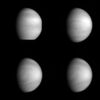
Mysterious missing component in the clouds of Venus revealed
More information: R Gupta, JWST early Universe observations and ΛCDM cosmology, Monthly Notices of the Royal Astronomical Society (2023). DOI: 10.1093/mnras/stad2032
Provided by University of Ottawa
Citation : New research puts age of universe at 26.7 billion years, nearly twice as old as previously believed (2023, July 13)
- Web Stories

New research puts age of universe at 26.7 billion years, nearly twice as old as previously believed
Our universe could possibly be twice as previous as present estimates, in line with a brand new research that challenges the dominant cosmological mannequin and sheds new gentle on the so-called “not possible early galaxy downside.”
The work is revealed within the journal Month-to-month Notices of the Royal Astronomical Society .
“Our newly-devised mannequin stretches the galaxy formation time by a a number of billion years, making the universe 26.7 billion years previous, and never 13.7 as beforehand estimated,” says creator Rajendra Gupta, adjunct professor of physics within the School of Science on the College of Ottawa.
For years, astronomers and physicists have calculated the age of our universe by measuring the time elapsed because the Massive Bang and by finding out the oldest stars based mostly on the redshift of sunshine coming from distant galaxies. In 2021, due to new methods and advances in know-how, the age of our universe was thus estimated at 13.797 billion years utilizing the Lambda-CDM concordance mannequin.
Nevertheless, many scientists have been puzzled by the existence of stars just like the Methuselah that look like older than the estimated age of our universe and by the invention of early galaxies in a complicated state of evolution made doable by the James Webb Area Telescope. These galaxies, current a mere 300 million years or so after the Massive Bang, seem to have a degree of maturity and mass sometimes related to billions of years of cosmic evolution. Moreover, they’re surprisingly small in measurement, including one other layer of thriller to the equation.
Zwicky’s drained gentle principle proposes that the redshift of sunshine from distant galaxies is as a result of gradual lack of power by photons over huge cosmic distances. Nevertheless, it was seen to battle with observations. But Gupta discovered that “by permitting this principle to coexist with the expanding universe , it turns into doable to reinterpret the redshift as a hybrid phenomenon, moderately than purely as a consequence of enlargement.”
Along with Zwicky’s drained gentle principle, Gupta introduces the thought of evolving “coupling constants,” as hypothesized by Paul Dirac. Coupling constants are fundamental physical constants that govern the interactions between particles. Based on Dirac, these constants may need diverse over time. By permitting them to evolve, the timeframe for the formation of early galaxies noticed by the Webb telescope at excessive redshifts might be prolonged from just a few hundred million years to a number of billion years. This offers a extra possible clarification for the superior degree of improvement and mass noticed in these historic galaxies.
Furthermore, Gupta means that the standard interpretation of the “cosmological fixed,” which represents dark energy answerable for the accelerating enlargement of the universe, wants revision. As a substitute, he proposes a relentless that accounts for the evolution of the coupling constants. This modification within the cosmological mannequin helps tackle the puzzle of small galaxy sizes noticed within the early universe , permitting for extra correct observations.
Extra info: R Gupta, JWST early Universe observations and ΛCDM cosmology, Month-to-month Notices of the Royal Astronomical Society (2023). DOI: 10.1093/mnras/stad2032
Supplied by University of Ottawa
Quotation : New analysis places age of universe at 26.7 billion years, almost twice as previous as beforehand believed (2023, July 13) retrieved 13 July 2023 from https://phys.org/information/2023-07-age-universe-billion-years-previously.html
This doc is topic to copyright. Aside from any truthful dealing for the aim of personal research or analysis, no half could also be reproduced with out the written permission. The content material is offered for info functions solely.
LEAVE A REPLY Cancel reply
Save my name, email, and website in this browser for the next time I comment.
Latest news
Tess finds intriguing world sized between earth and venus, new photos of the dark universe from euclid are filled with wonder, dyson spheres: astronomers report potential candidates for alien structures, and evidence against their existence, first proof that ‘plunging regions’ exist around black holes in space.

Visible planet night sky guide Pending
Euclid space telescope unveils new images of the cosmos.

You might also like RELATED Recommended to you
Editor picks.
- Astronomy 9486

If you have any query regrading Site, Advertisement and any other issue, please feel free to contact at [email protected]
Contact us: [email protected]
© Copyright - Newspaper theme by tagDiv
The future of the universe

Astrophysicist Risa Wechsler studies the evolution of the universe.
She says that our understanding of how the universe formed and how it will change over time is changing as new technologies for seeing and measuring space come online, like a new high-resolution camera that can quickly map the full sky to see everything that moves, or new spectrographs that will map the cosmos in 3D and enable us to get new clues about the elusive dark matter. You can’t understand the universe or our presence in it until you understand dark matter, Wechsler tells host Russ Altman on this episode of Stanford Engineering’s The Future of Everything podcast.
Listen on your favorite podcast platform:
Related : Risa Wechsler , professor of physics and of particle physics and astrophysics
[00:00:00] Risa Wechsler: We get to ask and try to answer the biggest questions that we have. So these are questions like how did the universe evolve from early times until the present day? What is it made of? And how did galaxies form?
[00:00:21] Russ Altman: This is Stanford Engineering's The Future of Everything podcast and I'm your host Russ Altman. If you're enjoying the show or if it's helped you in any way, please consider rating and reviewing to share your thoughts. Your input is extremely valuable and helps others discover what the show is all about.
[00:00:37] Today, Professor Risa Wechsler will tell us about the universe, cosmology, how galaxies form, how they evolve, and how we're measuring them. It's the future of the universe.
[00:00:48] Before we get started, another reminder to rate and review the show, particularly if you've learned something new, or found it helpful in any way.
[00:01:03] For thousands of years, we humans have looked up to the skies and wondered about the universe. We see planets and the Moon, but we also see stars and galaxies far, far away. We don't really understand the details of how big is the universe? Are we at the center of the universe or are we near the edge? How do you even measure that?
[00:01:24] Well, Professor Risa Wechsler from Stanford University is a professor of physics, particle physics, and astrophysics. And she is an expert at studying the universe, how it's expanding, and how galaxies within the universe evolve. She's especially interested in the galaxy that we live in, the Milky Way galaxy, my personal favorite galaxy.
[00:01:46] Risa, you study the universe and the galaxies within the universe. What are the big questions that your group is struggling with these days?
[00:01:56] Risa Wechsler: Yeah, so, you know, I got into um, astrophysics and cosmology because we get to ask and try to answer the biggest questions that we have. So these are questions like how did the universe evolve from early times until the present day? What is it made of and how did galaxies form? So big picture, those are the questions that I have been interested in and continue to be interested in. And um, we have a lot of exciting tools that we, that my group is using to try to answer those questions.
[00:02:30] Russ Altman: Great. So let's get right into the tools. 'Cause I think, I mean, we could start with a lot of definitions and I'm sure we're going to have to define some terms. But let's just go with, tell us about some of the technologies and what are you measuring and how are you looking at these galaxies, uh, and the extent of the universe?
[00:02:46] Risa Wechsler: Yeah, that's great. I mean, one of the things that I'm really excited about right now at this moment is that we have a bunch of surveys that either have just come online or are about to come online that are gonna be able to map the universe substantially better than we have been able to do before. So one of those that we're playing a big role here in, at Stanford and SLAC is called the Rubin Observatory's Legacy Survey of Space and Time.
[00:03:17] Russ Altman: Okay.
[00:03:17] Risa Wechsler: This is the largest camera that has ever been built. It's a three point two gigapixel camera. Um, and, uh, we actually, uh, just put it in the box last week, um, up at SLAC and are shipping it to Chile very soon. Um, and that camera is exciting because it's going to survey the entire Southern sky, essentially every three nights, over ten years, it'll take more than eight hundred pictures of each patch of the sky with this incredibly precise camera.
[00:03:47] Russ Altman: Yes.
[00:03:48] Risa Wechsler: And that's going to allow us to make, um, you know, a better map than we ever have before. And that's just one of the instruments that we now have, um, or will have in the next few years to make these kinds of maps. So in my group, what we're particularly interested in is essentially how do we use the information from all of these maps, um, different kinds of resolution, different kinds of data, different fields of view, uh, that go to different depths. And put them all together in essentially a self-consistent picture for how the universe evolved, um, using computer simulations and modeling to try to, uh, you know, help us piece together the entire evolution of the universe and what it's made of.
[00:04:37] Russ Altman: Okay, so like great. So that was great because now I have a million questions. First of all, what does a map mean to you? So I think about maps, I think about maybe a 2D map of the of roads and streets and google map. Sometimes you can imagine a 3D map like of the universe, of the solar system with the Sun, the planets are going around it.
[00:04:57] So when you say a map of the universe, is it three dimensional coordinates? I'm guessing maybe not, but maybe yes. Tell me what it looks like?
[00:05:05] Risa Wechsler: Yeah, that's a perfect question and a perfect introduction to these different kinds of measurements that we can make.
[00:05:12] So, uh, you can think of most of the measurements we make, it's a little bit more complicated than this, but you can think of most of the measurements we make as either a 2D map that can give you some fuzzy information in the third dimension, or a quite precise 3D map. And, um, the way we get, so when you take a picture, you basically have a 2D map, um, the, so the way you get that third dimension, which of course we want, because what's super exciting in the universe is when you look far away, you are also looking back in time. So the further away we can look and the more precisely we can pin down what that third dimension is, the better we can really make that third map and go, you know, ideally back to the very early stages of the universe when galaxies first started to form.
[00:06:03] Russ Altman: And just to clarify, just to, sorry to interrupt, but the reasons that it's looking back in time is because light takes a certain amount of time to reach us and so that the things that are farthest away sent their light to us the longest time ago. And so the farthest ones are kind of the oldest, and that's why.
[00:06:21] Risa Wechsler: That's exactly right. I mean, we have this wonderful, um, happy fact of physics that comes from general relativity that light has a very specific and fast but finite speed. And so even when we look at the Sun, it, that, that light from the Sun is not emitted right now. It was emitted about eight minutes ago.
[00:06:42] When we look, uh, you know, when we look very far away, we can start to see light that was emitted more than thirteen billion years ago. So, that's why we, uh, when we look far away, uh, we are looking back in time. So, in order to get that third dimension, um, the most common tool that astronomers use is something called spectroscopy.
[00:07:03] So, we essentially have two different kinds of, um, measurements we make. One is basically pictures, imaging. And the other is spectroscopy, where you, uh, where you take maybe a fiber or a slit and you disperse the light as a function of wavelength. So then you get, um, you get the intensity of light as a function of wavelength. That's what astronomers call a spectrum. And because, uh, light that's moving away from you is actually shifted to the red, we measure something that astronomers call a redshift.
[00:07:34] Russ Altman: This is just like the trains, right? This is what we learned in high school. The train that's going away from you gets lower in sound and the one that's coming towards you has a different change in the sound. And that same thing happens with the lights from the stars.
[00:07:48] Risa Wechsler: That's exactly right, from stars, or galaxies, or quasars. And so any, so that light gets shifted and then there's some typical features that come from, you know, transitions in elements. Oxygen, for example, has some transitions that, you know, we could even measure in the lab. When we see that at a different wavelength than we see it on earth, we know that it's moving away from us.
[00:08:11] Russ Altman: Gotcha.
[00:08:11] Risa Wechsler: And one of the projects that I'm involved in, uh, is called DESI, the Dark Energy Spectroscopic Instrument. This project has now taken spectra of more than a factor of twenty, uh, than all instruments before. So we now have, I think, forty or fifty million, um, redshifts of galaxies and stars and quasars. And that's a new way to actually make 3D maps and not just 2D maps. So you can't go as deep with that spectroscopy. So we actually do both of these things, uh, together and in concert and we try to put them together. So that we can make really deep 2D maps and then also, uh, these really nice 3D maps as well.
[00:08:56] Russ Altman: Great, okay. So we have a little bit of a sense of how these measurements and it's great because it's a common, not surprisingly, it's a combination of the images in 2D plus the spectroscopy and you're getting 3D information. But let's get to the fun part. Uh, and I have questions about galaxies, but like, tell me about the universe. Like where are we? So we're in the Milky Way galaxy, if I understand correctly.
[00:09:18] Risa Wechsler: Yeah.
[00:09:18] Russ Altman: Are we at the edge of the universe? Are we in the middle of it? And what is the shape? Should I think of it as uniform? Like a, just a bunch of points in space, like a fog of clouds or is it a much more interesting non like blob of matter? So paint a picture if you can. And I know this is an incredibly unfair question, but welcome to The Future of Everything.
[00:09:39] Risa Wechsler: No, it's a great question. Okay. So the first thing you need to know is that the universe is about thirteen point eight billion years old. And the other key thing that you need to know about the universe is, thirteen point eight billion years ago, the universe was very hot, and very dense, and very smooth. And it was definitely smaller than it is today. But we don't have any idea how big it is. And in fact, we don't even know whether it's finite or infinite. So it's a very strange thing, whereas everyone wants to know the answer to your question of where are we in the universe?
[00:10:18] As far as we know, the universe whether or not it's finite or infinite, it is way, way, way, way bigger than the part of the universe that we can see. So, for those purposes, there is no edge, as far as we know, there is no edge, there is no center. Um, we are not at the center except for that we are at the center of our observable universe because we, because, that's we are the observer.
[00:10:46] Russ Altman: Right, right.
[00:10:47] Risa Wechsler: And so we can see in a sphere around us, that's thirteen point eight billion light years away, that's what, that's the universe we can see. And we call that the observable universe. That's essentially the edge of, um, how far light could have traveled to us.
[00:11:06] Russ Altman: Yup.
[00:11:06] Risa Wechsler: From the beginning of the universe.
[00:11:08] Russ Altman: But importantly, we do see no matter what direction we look, do we see stuff? Because that means conceptually, we're not at least conceptually, it seems to me at an edge. If we can look in every direction and see something.
[00:11:20] Risa Wechsler: That's right. And you asked if it was the same in all directions. And the answer to that question is it depends on the scale. So if I look it to, so on large scales, the answer is yes. Incredibly precisely the same in all directions. There is stuff in all directions and it is essentially the same, actually more than you would even expect. On small scales it's different. The universe is very, very clumpy on small scales because we had a process in the early universe, which we think actually came from quantum fluctuations, which created little parts where the universe was a tiny bit denser and little parts where the universe was a tiny bit less dense.
[00:12:01] And most of what has been happening over the last thirteen point eight billion years, is those places that had a little bit of extra stuff to begin with, got a lot more stuff now. And so any place that you're in a galaxy is a place that started with a little bit more stuff and eventually collapsed into a galaxy.
[00:12:19] Russ Altman: Well, let's go to galaxies.
[00:12:22] Risa Wechsler: Great.
[00:12:23] Russ Altman: Tell me about a galaxy. I know you study galaxy formation. You said already that you study galaxy evolution. Talk to me about galaxies.
[00:12:31] Risa Wechsler: Yeah, so okay. Most of the universe is not made of the same stuff that we are or the same stuff that galaxies are, which is mostly stars and gas, mostly hydrogen gas. Most of the universe is actually made of dark matter and I'm sure we'll get back to that. But what you can think of is that in the early universe there was dark matter and there was hydrogen and a little bit of helium.
[00:12:56] Russ Altman: Okay.
[00:12:57] Risa Wechsler: And they were pretty much evenly distributed with a little bit of these tiny fluctuations that were created early on. The key thing that's different between dark matter and normal matter. And I'm getting into dark matter because we actually have to understand dark matter to understand galaxy formations.
[00:13:16] Russ Altman: You just talked about a dark matter survey or something a few minutes ago, so clearly it's on your mind.
[00:13:23] Risa Wechsler: We're going to get back to that. Um, so the key difference is that gas, when gas particles hit each other, they cool down, they lose energy. They can, you know, they can emit energy and cool down. That doesn't happen with dark matter as far as we understand. So you have a clump of stuff, which is both dark matter, and gas and eventually the gas particles sink to the center of that clump of stuff. And once they sink to the center they can start to cool and they can start to form galaxies.
[00:13:55] This process happens really early on as we now actually have new images from the James Webb Space Telescope that are further back in time than we've ever seen before and we know that we're starting to form galaxies already in the first basically a hundred, few hundred million years of the universe.
[00:14:16] So that's when it starts, but it happens in this, um, sort of hierarchical process where you start with only the most dense regions of the universe that can start to form galaxies. And then over time, more and more regions, uh, get collapsed enough that they can start to form stars and they merge together and grow over time so that every single galaxy, like the Milky Way, is actually comes from the merger of hundreds of smaller things over the last thirteen point, thirteen billion years or so.
[00:14:49] Russ Altman: And it sounds like you've created a typology of galaxies because I'm looking through your work, I see mentions of satellite galaxies, dwarf galaxies, lots of different kinds of galaxies. I don't know if these are ones that you should tell us about. But it's interesting to me because it sounds like that evolution that you just described, that formation and evolution can take different paths.
[00:15:11] Risa Wechsler: Yeah. Well, so the way I think about this is actually fundamentally, I told you in the beginning that what I want to do most of all is put observations of galaxies into sort of like a unified framework of how we understand how the whole universe formed. So there are lots of experts who think specifically about one type of galaxy or another type of galaxy. That's not me. I like to think about all galaxies at the same time. Although I do have a sweet spot in my heart for these tiny, tiny galaxies, um, that we might talk about later. So galaxies can, um, so they form in these clumps of dark matter. The masses of the dark matter clumps that they form in are everywhere from maybe a few hundred million times the mass of the Sun, um, all the way up to ten to the fifteen times the mass of the Sun.
[00:16:03] Russ Altman: Okay, so that's a huge range.
[00:16:05] Risa Wechsler: So yeah, like a trillion times, right? So it's a, it's like seven orders of magnitude that you actually, are the dark matter clumps that you can form a galaxy. And so because of that, basically because it's a very wide mass scale and the gas processes are different over that mass scale, you get galaxies that look different.
[00:16:28] You can think of them as forming in different environments. Some, it's like some galaxies you can imagine forming in dense places like cities and some galaxies, you know, form out in the countryside where there's not a lot of stuff around. Those are the kinds of things that can lead to differences in what galaxies look like.
[00:16:45] Now, this thing about satellite galaxies is an important piece because what I mentioned is that the way galaxies form is that they start in these initial density peaks and they merge and grow over time. They merge and grow, it's like, you know, it's like the Sun rotating or the earth rotating around the Sun or even the Moon, uh, you know, circling the earth, galaxies have satellites similar to that. And they, they kind of come in and they get accreted, and they eventually get destroyed and merge into the main thing, but that takes quite a bit of time.
[00:17:20] Russ Altman: But also, so many of the principles, if I'm understanding, many of the principles of gravity apply even at the scale so that if you have a big galaxy and there's a little one and if it's close enough, it might, and forgive my language, it might start circulating around that big gallery, galaxy in some sense.
[00:17:36] Risa Wechsler: That's right. And actually, this is the amazing thing about gravity. I mean, gravity is a theory that we understand incredibly well. It is the only thing that matters on very large scales in the universe. Uh, you know, Einstein wrote down a theory, general relativity. It still seems to work on every single scale we have possibly tested it. And that literally means including on the scale of the whole universe. So when I am mostly thinking about how dark matter and galaxies behave in the universe, for me personally, because of the scales that I'm interested, in relatively large scales, gravity is the main thing that matters for everything.
[00:18:14] And we know how it works. It's, it turns out to be hard to calculate because as you heard, we're calculating things on a very wide range of scales.
[00:18:24] Russ Altman: Right, right.
[00:18:25] Risa Wechsler: All the way from, you know, the details of exactly how the Milky Way forms to, you know, how a trillion galaxies formed in the universe. Um, so it's a complicated computational problem, but conceptually it's just the same gravity that, you know, is why you're sitting in your chair.
[00:18:43] Russ Altman: This is The Future of Everything. We'll have more with Risa Wechsler next.
[00:18:56] Welcome back to The Future of Everything. I'm your host, Russ Altman, and we're speaking with Professor Risa Wechsler about physics, astrophysics, the edges of the universe, and where galaxies come from.
[00:19:08] In the next segment, Risa will tell us about dark matter, dark energy, and how she and her colleagues are measuring these things to get a better understanding of how fast the universe is accelerating in its growth.
[00:19:22] But Risa, one of the things you mentioned that we didn't get into a little bit was dark energy and dark matter, and it sounds like that's quite fundamental. So can you take us through what we need to know about that to appreciate our evolving understanding of the universe?
[00:19:36] Risa Wechsler: Yeah, great. Okay, so the first thing, um, I am really interested in this basic question, what is the universe made of?
[00:19:44] Okay. And the first thing you need to know about the answer to that question is that most of the universe is made of different stuff than you and me, right? You and me are made of hydrogen and carbon and oxygen and other things like that. Everything on the periodic table, all of the things that you and me and the Sun and the stars are made of.
[00:20:03] Russ Altman: The entire chemistry AP exam.
[00:20:06] Risa Wechsler: All of chemistry AP, and in fact, all of the standard model of particle physics is all less than five percent of what the universe is made of. So, we now know that there are these two other things, um, dark matter, we think is matter, but it's matter, so it behaves exactly the same gravitationally as normal matter does, as far as we have seen.
[00:20:32] And we can see its impact gravitationally on everything from the tiniest galaxies in the universe to how the entire universe as a whole moves and changes over time. But as far as we know, it's a particle and we don't know what this particle is. So we're looking for it, but we're looking for, it might be really, really small. It might be ten to the minus twenty-one times smaller than an electron, or it might be, you know, a thousand times the mass of the Sun. That's a very big mass range.
[00:21:04] Russ Altman: Right.
[00:21:04] Risa Wechsler: We don't know what it is and we're looking.
[00:21:06] Russ Altman: Do we know if it's in our presence or is it out there somewhere?
[00:21:09] Risa Wechsler: No, it's everywhere. It's everywhere and it is actually, it doesn't interact with us. So it's probably going through you and me because we are, you know, the earth is spinning around the Sun and the Sun is spinning around the Milky Way. So we actually are moving through the galaxy, um, as we speak.
[00:21:27] Russ Altman: Okay.
[00:21:27] Risa Wechsler: Through this wind of dark matter. So that's the dark matter, but um, then there's this other thing that's even stranger, which is not even matter at all. And we call that thing dark energy. It's kind of just a funny name. Uh, we don't know what it is, but what we do know is, we know how much there is, and we know what it's doing to the universe. So dark energy basically does two things. It changes the way the universe expands over time. And it changes, along with dark matter, they both change how structure grows, so how small things become big.
[00:22:00] And so we actually, even though we don't know what this thing is, it has an impact on the universe on very, very large scales. And so that's one of the reasons that we're making these very big maps, to figure out what dark energy and dark matter are.
[00:22:17] Russ Altman: Okay, great. So you've described for us a little bit about dark matter, a little bit about dark energy. How does this, how do you use these concepts for doing what you really have said now a couple of times you're interested in, which is understanding and mapping the universe?
[00:22:32] Risa Wechsler: Yeah, so these maps of the universe are actually really sensitive to both dark matter and dark energy. Um, dark energy, even though we don't know what it is, impacts things on large scales in the universe.
[00:22:43] So it impacts how the universe evolves over time. It impacts it in two ways. One is how fast the universe expands, and the other is how fast it gets clumpy. And so by making these maps that I told you about, we're actually separately able to map out how fast is the universe clumping up? How fast is gravity working? And how fast is it speeding apart? It actually turns out the universe is not just expanding, it's actually accelerating. And that is the key reason that we know that dark energy is a thing. It's probably like a property of the vacuum itself that kind of pushes one bit of space away from another bit of space.
[00:23:22] So we know it's accelerating, we don't know why, and we want to measure how fast as well as we possibly can. So that's dark energy. Now, dark matter is, it, so it does impact how fast the universe expands and how fast it gets clumpy. But it also, because it's a, probably a small thing, can do all kinds of other things.
[00:23:43] We want to actually understand what's the mass of the dark matter particle, and also how it interacts. And, we have lots of ways to do that, actually, some of my colleagues here at Stanford and SLAC are trying to build experiments deep underground to try to catch dark matter in the act, and see if it actually interacts with us.
[00:24:02] What I'm personally doing is trying to understand how dark matter behaves, on the scale both of the whole universe and on the scale of individual galaxies because it turns out that what dark matter is, like actually what particle it is, can influence things like how many galaxies there are, um, how clumpy they are, how they behave, how they move.
[00:24:26] And so, um, one of the ways I've been thinking about that recently is there's another kind of map we make, which is actually a very precise map of the Milky Way itself. And there are some things that we can only measure in the Milky Way, including the tiniest galaxies in the universe, which these small ones are like only a few hundred stars. And the way they move actually is very sensitive to what the dark matter particle is. So that's a new tool we have to learn about what that is.
[00:24:57] Russ Altman: Great. So now you had mentioned this Saga survey, and you had so much excitement that I want to make sure I ask you about it and why we, all need to be excited about it.
[00:25:07] Risa Wechsler: Yeah, so, big picture, we live in the Milky Way, and I already mentioned to you that there's some, many things that we can only measure at high precision in the Milky Way. But of course, the Milky Way is one galaxy, and it's one of probably a trillion galaxies in the universe. So every time we measure one thing really precisely, we always want to know, how does it fit in? How does it fit into everything else we know? So actually, about fifteen years ago, um, a colleague of mine, Marla Geha at Yale, uh, we were thinking, we were very frustrated by how often it was that people were comparing models of all the galaxies that look like the Milky Way with this one galaxy, the Milky Way.
[00:25:50] So we thought, okay, well, let's find a hundred of them. And that was a kind of ambitious plan at the time. The thing we were interested in specifically is, I mean, we'd like to know everything about these hundred galaxies that are similar to the Milky Way. What we specifically targeted was their satellite galaxies, their bright satellite galaxies.
[00:26:09] In the Milky Way, we actually know right now of almost sixty galaxies that are orbiting our own galaxy. But some of them are so tiny that you can only see them even very nearby. You can't even see them at the edge of the Milky Way. So here, what we wanted to do was find the satellite galaxies around these hundred Milky Way like systems.
[00:26:29] So we actually, it was quite an ambitious project, both theoretically and observationally. But we found, we, we have these hundred systems now, actually a hundred and one. And um, and we have identified almost four hundred satellites that orbit these hundred systems. And so what that does is it helps us understand the context of our home. Everything we measure about the Milky Way we can now put into context with these hundred other systems to understand, you know, how it varies as a function of their formation history.
[00:27:02] Russ Altman: Right. So instead it's just like so, you know, I sometimes I'm a doctor I sometimes get involved in clinical research and you can give a drug to one patient and it'll work or it won't work But you have no idea if it's actually going to work for everybody else. But if you give me ninety-nine other patients, then I begin to have some idea of what's a normal response and what's abnormal. So it's kind of easy for me to believe that by looking at a hundred, and I'm interested in this idea, you must've had to define what similar meant.
[00:27:28] Risa Wechsler: Yeah. In this case, we actually just looked at mostly basically how massive it was. And I can take your analogy a little bit further, right? If these hundred people, like, they have different genetics, right? Their parents may have been more or less likely to have had heart disease.
[00:27:46] Russ Altman: Yes, absolutely.
[00:27:47] Risa Wechsler: And same thing with these hundred Milky Ways. They have had different formation histories. They were formed in different environments. Some of them essentially were formed in cities and some were formed in the country.
[00:28:01] Some of them actually, you know, um, had a progenitor which was very massive ten billion years ago, and some of them actually just kind of caught up very late. Um, so that's the kind of diversity that we can try to understand and put the Milky Way into context.
[00:28:16] Russ Altman: So I take it that when you make these measurements, you're seeing the fingerprints of their history in the measurements.
[00:28:22] Risa Wechsler: Exactly. That's exactly right. And that helps us understand the Milky Way, uh, much better. We now know a ton about the Milky Way and it's a really exciting time because we're able to measure, map it much more precisely with the next generation of instruments. And hopefully learn more, not only about galaxy formation, but also about dark matter.
[00:28:42] We sort of know the Milky Way formed a little bit early, but then it had this interesting collision that happened only a bill, one or two billion years ago with a with an object called the Large Magellanic Cloud that was pretty massive and brought in a bunch of its own systems with it. And so that turns out to be a really important thing for understanding all of the details that we can only measure in our own system.
[00:29:04] Russ Altman: So I have to ask, because when I was a kid, I loved, I had a telescope, I did astronomy. The Andromeda Galaxy was the only one I could ever find. Is that one of the hundred that you're looking at?
[00:29:14] Risa Wechsler: No. And there's a reason it's not, it's so close that we actually can't see most of the whole, you know, region around Andromeda. So we actually have to go far enough away that we can see the whole system.
[00:29:29] Russ Altman: Thanks to Risa Wechsler. That was The Future of the Universe. Thanks for tuning in to this episode, too. With more than 250 episodes in our archives, you have instant access to a whole range of fascinating conversations with me and other people.
[00:29:46] If you're enjoying the show, please remember to consider sharing it with friends, family, and colleagues. Personal recommendations are the best way to spread the news about The Future of Everything. You can connect with me on X or Twitter @RBAltman, and you can connect with Stanford Engineering @StanfordENG.

The Brown Institute announces its 2024-2025 Magic Grant recipients

Mechanical engineering conference unites a broad field

Richard M. Christensen, expert on the mechanics of materials, has died
CSE INSIDER
Search this blog, reinventing cosmology: new research puts age of the universe at 26.7 — not 13.7 — billion years.

Post a Comment
A new theory of quantum gravity could explain the biggest puzzle in cosmology, study suggests
A new theory of quantum gravity, which attempts to unite quantum physics with Einstein's relativity, could help solve the puzzle of the universe's expansion, a theoretical paper suggests.
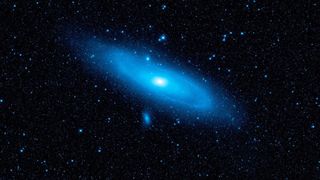
A variation on the theory of quantum gravity — the unification of quantum mechanics and Einstein's general relativity — could help solve one of the biggest puzzles in cosmology, new research suggests.
For nearly a century, scientists have known that the universe is expanding. But in recent decades, physicists have found that different types of measurements of the expansion rate — called the Hubble parameter — produce puzzling inconsistencies.
To resolve this paradox, a new study suggests incorporating quantum effects into one prominent theory used to determine the expansion rate.
"We tried to resolve and explain the mismatch between the values of the Hubble parameter from two different prominent types of observations," study co-author P.K. Suresh , a professor of physics at the University of Hyderabad in India, told Live Science via email.
An expanding problem
The universe's expansion was first identified by Edwin Hubble in 1929. His observations with the largest telescope of that time revealed that galaxies farther from us appear to move away at faster speeds. Although Hubble initially overestimated the expansion rate, subsequent measurements have refined our understanding, establishing the current Hubble parameter as highly reliable.
Later in the 20th century, astrophysicists introduced a novel technique to gauge the expansion rate by examining the cosmic microwave background, the pervasive "afterglow" of the Big Bang .
However, a serious problem arose with these two types of measurements. Specifically, the newer method produced a Hubble parameter value almost 10% lower than the one deduced from the astronomical observations of distant cosmic objects. Such discrepancies between different measurements, called the Hubble tension, signal potential flaws in our understanding of the universe's evolution.
Sign up for the Live Science daily newsletter now
Get the world’s most fascinating discoveries delivered straight to your inbox.
Related: Newfound 'glitch' in Einstein's relativity could rewrite the rules of the universe, study suggests
In a study published in the journal Classical and Quantum Gravity , Suresh and his colleague from the University of Hyderabad, B. Anupama, proposed a solution to align these disparate results. They underscored that physicists infer the Hubble parameter indirectly, employing our universe's evolutionary model based on Einstein's theory of general relativity.
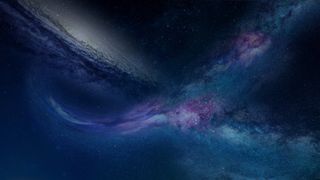
The team argued for revising this theory to incorporate quantum effects. These effects, intrinsic to fundamental interactions, encompass random field fluctuations and the spontaneous creation of particles from the vacuum of space.
Despite scientists' ability to integrate quantum effects into theories of other fields, quantum gravity remains elusive, making detailed calculations extremely difficult or even impossible. To make matters worse, experimental studies of these effects require reaching temperatures or energies many orders of magnitude higher than those achievable in a lab.
Acknowledging these challenges, Suresh and Anupama focused on broad quantum-gravity effects common to many proposed theories.
"Our equation doesn't need to account for everything, but that does not prevent us from testing quantum gravity or its effects experimentally," Suresh said.
Their theoretical exploration revealed that accounting for quantum effects when describing the gravitational interactions in the earliest stage of the universe's expansion, called cosmic inflation, could indeed alter the theory's predictions regarding the properties of the microwave background at present, making the two types of Hubble parameter measurements consistent.
Of course, final conclusions can be drawn only when a full-fledged theory of quantum gravity is known, but even the preliminary findings are encouraging. Moreover, the link between the cosmic microwave background and quantum gravitational effects opens the way to experimentally studying these effects in the near future, the team said.
"Quantum gravity is supposed to play a role in the dynamics of the early universe; thus its effect can be observed through measurements of the properties of the cosmic microwave background," Suresh said.
— Mysterious 'unparticles' may be pushing the universe apart, new theoretical study suggests
— 'It could be profound': How astronomer Wendy Freedman is trying to fix the universe
— James Webb telescope discovers oldest black hole in the universe
"Some of the future missions devoted to studying this electromagnetic background are highly probable and promising to test quantum gravity. … It provides a promising suggestion to resolve and validate the inflationary models of cosmology in conjunction with quantum gravity."
Additionally, the authors posit that quantum gravitational phenomena in the early universe might have shaped the properties of gravitational waves emitted during that period. Detecting these waves with future gravitational-wave observatories could further illuminate quantum gravitational characteristics.
"Gravitational waves from various astrophysical sources have only been observed so far, but gravitational waves from the early universe have not yet been detected," Suresh said. "Hopefully, our work will help in identifying the correct inflationary model and detecting the primordial gravitational waves with quantum gravity features."
Andrey got his B.Sc. and M.Sc. degrees in elementary particle physics from Novosibirsk State University in Russia, and a Ph.D. in string theory from the Weizmann Institute of Science in Israel. He works as a science writer, specializing in physics, space, and technology. His articles have been published in Elements , N+1 , and AdvancedScienceNews .
Euclid space telescope reveals more than 300,000 new objects in 1st 24 hours of observations (photos)
Can a commercial airplane do a barrel roll?
'A force more powerful than gravity within the Earth': How magnetism locked itself inside our planet
Most Popular
- 2 James Webb telescope confirms there is something seriously wrong with our understanding of the universe
- 3 Scientists grow diamonds from scratch in 15 minutes thanks to groundbreaking new process
- 4 Scientists just discovered an enormous lithium reservoir under Pennsylvania
- 5 Ancient Mycenaean armor is so good, it protected users in an 11-hour battle simulation inspired by the Trojan War
- 2 Man Coughs Up a Giant Blood Clot in the Shape of His Lung
- 3 10 surprising things that are made from petroleum
- 4 Alaska's rivers are turning bright orange and as acidic as vinegar as toxic metal escapes from melting permafrost
- 5 What's the highest place on Earth that humans live?
- Privacy Policy
- Term & Conditions
SCIENCE & NATURE
- Environment
Reinventing cosmology: New research puts age of universe at 26.7 — not 13.7 — billion years

Our universe could be twice as old as current estimates, according to a new study that challenges the dominant cosmological model and sheds new light on the so-called “impossible early galaxy problem.”
“Our newly-devised model stretches the galaxy formation time by a several billion years, making the universe 26.7 billion years old, and not 13.7 as previously estimated,” says author Rajendra Gupta, adjunct professor of physics in the Faculty of Science at the University of Ottawa.
For years, astronomers and physicists have calculated the age of our universe by measuring the time elapsed since the Big Bang and by studying the oldest stars based on the redshift of light coming from distant galaxies. In 2021, thanks to new techniques and advances in technology, the age of our universe was thus estimated at 13.797 billion years using the Lambda-CDM concordance model.
However, many scientists have been puzzled by the existence of stars like the Methuselah that appear to be older than the estimated age of our universe and by the discovery of early galaxies in an advanced state of evolution made possible by the James Webb Space Telescope. These galaxies, existing a mere 300 million years or so after the Big Bang, appear to have a level of maturity and mass typically associated with billions of years of cosmic evolution. Furthermore, they’re surprisingly small in size, adding another layer of mystery to the equation.
Zwicky’s tired light theory proposes that the redshift of light from distant galaxies is due to the gradual loss of energy by photons over vast cosmic distances. However, it was seen to conflict with observations. Yet Gupta found that “by allowing this theory to coexist with the expanding universe, it becomes possible to reinterpret the redshift as a hybrid phenomenon, rather than purely due to expansion.”
In addition to Zwicky’s tired light theory, Gupta introduces the idea of evolving “coupling constants,” as hypothesized by Paul Dirac. Coupling constants are fundamental physical constants that govern the interactions between particles. According to Dirac, these constants might have varied over time. By allowing them to evolve, the timeframe for the formation of early galaxies observed by the Webb telescope at high redshifts can be extended from a few hundred million years to several billion years. This provides a more feasible explanation for the advanced level of development and mass observed in these ancient galaxies.
Moreover, Gupta suggests that the traditional interpretation of the “cosmological constant,” which represents dark energy responsible for the accelerating expansion of the universe, needs revision. Instead, he proposes a constant that accounts for the evolution of the coupling constants. This modification in the cosmological model helps address the puzzle of small galaxy sizes observed in the early universe, allowing for more accurate observations.
Reference: Monthly Notices of the Royal Astronomical Society
You may like these posts
Post a comment, social plugin, popular posts.

NASA nuclear propulsion concept could reach Mars in just 45 days

Passing Dwarf Galaxy Made Milky Way’s Stars Bob Up And Down

Universe is about 13.8 billion years old, study confirms
Menu footer widget.
Suggestions or feedback?
MIT News | Massachusetts Institute of Technology
- Machine learning
- Social justice
- Black holes
- Classes and programs
Departments
- Aeronautics and Astronautics
- Brain and Cognitive Sciences
- Architecture
- Political Science
- Mechanical Engineering
Centers, Labs, & Programs
- Abdul Latif Jameel Poverty Action Lab (J-PAL)
- Picower Institute for Learning and Memory
- Lincoln Laboratory
- School of Architecture + Planning
- School of Engineering
- School of Humanities, Arts, and Social Sciences
- Sloan School of Management
- School of Science
- MIT Schwarzman College of Computing
MIT researchers discover the universe’s oldest stars in our own galactic backyard
Press contact :, media download.
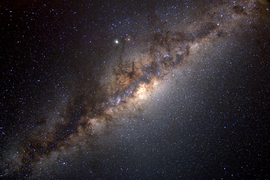
*Terms of Use:
Images for download on the MIT News office website are made available to non-commercial entities, press and the general public under a Creative Commons Attribution Non-Commercial No Derivatives license . You may not alter the images provided, other than to crop them to size. A credit line must be used when reproducing images; if one is not provided below, credit the images to "MIT."
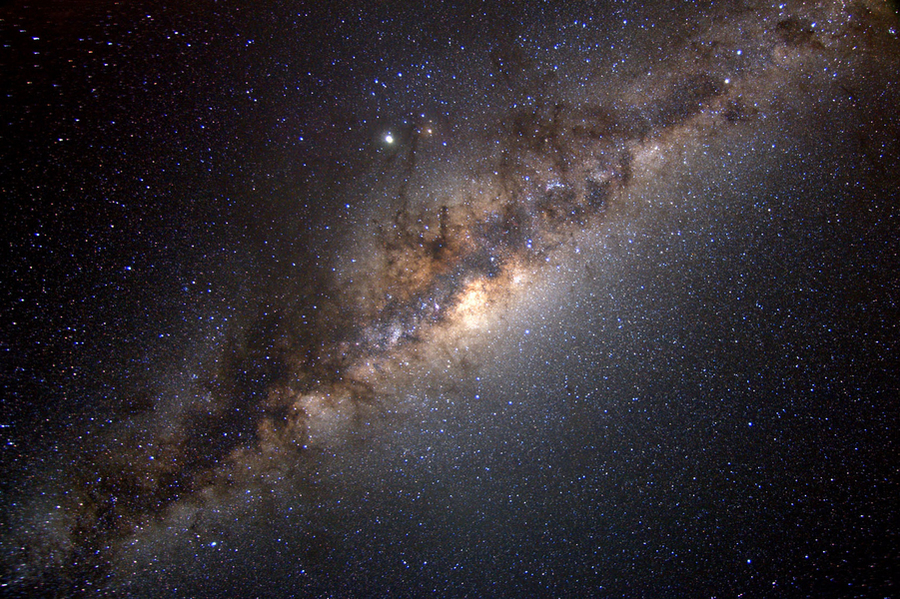
Previous image Next image
MIT researchers, including several undergraduate students, have discovered three of the oldest stars in the universe, and they happen to live in our own galactic neighborhood.
The team spotted the stars in the Milky Way’s “halo” — the cloud of stars that envelopes the entire main galactic disk. Based on the team’s analysis, the three stars formed between 12 and 13 billion years ago, the time when the very first galaxies were taking shape.
The researchers have coined the stars “SASS,” for Small Accreted Stellar System stars, as they believe each star once belonged to its own small, primitive galaxy that was later absorbed by the larger but still growing Milky Way. Today, the three stars are all that are left of their respective galaxies. They circle the outskirts of the Milky Way, where the team suspects there may be more such ancient stellar survivors.
“These oldest stars should definitely be there, given what we know of galaxy formation,” says MIT professor of physics Anna Frebel. “They are part of our cosmic family tree. And we now have a new way to find them.”
As they uncover similar SASS stars, the researchers hope to use them as analogs of ultrafaint dwarf galaxies, which are thought to be some of the universe’s surviving first galaxies. Such galaxies are still intact today but are too distant and faint for astronomers to study in depth. As SASS stars may have once belonged to similarly primitive dwarf galaxies but are in the Milky Way and as such much closer, they could be an accessible key to understanding the evolution of ultrafaint dwarf galaxies.
“Now we can look for more analogs in the Milky Way, that are much brighter, and study their chemical evolution without having to chase these extremely faint stars,” Frebel says.
She and her colleagues have published their findings today in the Monthly Notices of the Royal Astronomical Society (MNRAS) . The study’s co-authors are Mohammad Mardini, at Zarqa University, in Jordan; Hillary Andales ’23; and current MIT undergraduates Ananda Santos and Casey Fienberg.
Stellar frontier
The team’s discoveries grew out of a classroom concept. During the 2022 fall semester, Frebel launched a new course, 8.S30 (Observational Stellar Archaeology), in which students learned techniques for analyzing ancient stars and then applied those tools to stars that had never been studied before, to determine their origins.
“While most of our classes are taught from the ground up, this class immediately put us at the frontier of research in astrophysics,” Andales says.
The students worked from star data collected by Frebel over the years from the 6.5-meter Magellan-Clay telescope at the Las Campanas Observatory. She keeps hard copies of the data in a large binder in her office, which the students combed through to look for stars of interest.
In particular, they were searching ancient stars that formed soon after the Big Bang, which occurred 13.8 billion years ago. At this time, the universe was made mostly of hydrogen and helium and very low abundances of other chemical elements, such as strontium and barium. So, the students looked through Frebel’s binder for stars with spectra, or measurements of starlight, that indicated low abundances of strontium and barium.
Their search narrowed in on three stars that were originally observed by the Magellan telescope between 2013 and 2014. Astronomers never followed up on these particular stars to interpret their spectra and deduce their origins. They were, then, perfect candidates for the students in Frebel’s class.
The students learned how to characterize a star in order to prepare for the analysis of the spectra for each of the three stars. They were able to determine the chemical composition of each one with various stellar models. The intensity of a particular feature in the stellar spectrum, corresponding to a specific wavelength of light, corresponds to a particular abundance of a specific element.
After finalizing their analysis, the students were able to confidently conclude that the three stars did hold very low abundances of strontium, barium, and other elements such as iron, compared to their reference star — our own sun. In fact, one star contained less than 1/10,000 the amount of iron to helium compared to the sun today.
“It took a lot of hours staring at a computer, and a lot of debugging, frantically texting and emailing each other to figure this out,” Santos recalls. “It was a big learning curve, and a special experience.”
“On the run”
The stars’ low chemical abundance did hint that they originally formed 12 to 13 billion years ago. In fact, their low chemical signatures were similar to what astronomers had previously measured for some ancient, ultrafaint dwarf galaxies. Did the team’s stars originate in similar galaxies? And how did they come to be in the Milky Way?
On a hunch, the scientists checked out the stars’ orbital patterns and how they move across the sky. The three stars are in different locations throughout the Milky Way’s halo and are estimated to be about 30,000 light years from Earth. (For reference, the disk of the Milky Way spans 100,000 light years across.)
As they retraced each star’s motion about the galactic center using observations from the Gaia astrometric satellite, the team noticed a curious thing: Relative to most of the stars in the main disk, which move like cars on a racetrack, all three stars seemed to be going the wrong way. In astronomy, this is known as “retrograde motion” and is a tipoff that an object was once “accreted,” or drawn in from elsewhere.
“The only way you can have stars going the wrong way from the rest of the gang is if you threw them in the wrong way,” Frebel says.
The fact that these three stars were orbiting in completely different ways from the rest of the galactic disk and even the halo, combined with the fact that they held low chemical abundances, made a strong case that the stars were indeed ancient and once belonged to older, smaller dwarf galaxies that fell into the Milky Way at random angles and continued their stubborn trajectories billions of years later.
Frebel, curious as to whether retrograde motion was a feature of other ancient stars in the halo that astronomers previously analyzed, looked through the scientific literature and found 65 other stars, also with low strontium and barium abundances, that appeared to also be going against the galactic flow.
“Interestingly they’re all quite fast — hundreds of kilometers per second, going the wrong way,” Frebel says. “They’re on the run! We don’t know why that’s the case, but it was the piece to the puzzle that we needed, and that I didn’t quite anticipate when we started.”
The team is eager to search out other ancient SASS stars, and they now have a relatively simple recipe to do so: First, look for stars with low chemical abundances, and then track their orbital patterns for signs of retrograde motion. Of the more than 400 billion stars in the Milky Way, they anticipate that the method will turn up a small but significant number of the universe’s oldest stars.
Frebel plans to relaunch the class this fall, and looks back at that first course, and the three students who took their results through to publication, with admiration and gratitude.
“It’s been awesome to work with three women undergrads. That’s a first for me,” she says. “It’s really an example of the MIT way. We do. And whoever says, ‘I want to participate,’ they can do that, and good things happen.”
This research was supported, in part, by the National Science Foundation.
Share this news article on:
Press mentions.
Researchers at MIT have discovered “three of the oldest stars in the universe lurking right outside the Milky Way,” reports Elisha Sauers for Mashable . “These little stars are nearly 13 billion years old, and they haven't changed one bit since," says Prof. Anna Frebel. "The stars will continue to exist for about another 3 to 5 billion years or so."
MIT researchers have discovered three of the oldest stars in our universe among the stars that surround “the distant edge of our Milky Way galaxy,” reports Jess Thompson for Newsweek . “These stars, dubbed SASS (Small Accreted Stellar System stars), are suspected to have been born when the very first galaxies in the universe were forming, with each belonging to its own small primordial galaxy,” explains Thompson.
Prof. Anna Frebel and her colleagues have identified some of the oldest stars in our universe, located in the Milky Way’s halo, a discovery that stemmed from Frebel’s new course, 8.S30 (Observational Stellar Archaeology), reports Isaac Schultz for Gizmodo . “Studying the ancient stars won’t only help explain the timeline of stellar evolution, but also how our galaxy actually formed,” Schultz explains.
Previous item Next item
Related Links
- Anna Frebel
- MIT Kavli Institute for Astrophysics and Space Research
- Department of Physics
Related Topics
- Astrophysics
- Kavli Institute
- Space, astronomy and planetary science
- National Science Foundation (NSF)
Related Articles
Study: stars travel more slowly at milky way’s edge.
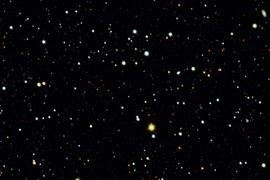
Astronomers detect extended dark matter halo around ancient dwarf galaxy

Communicating respect for graduate students
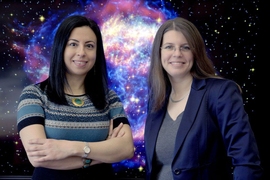
Explosions of universe’s first stars spewed powerful jets
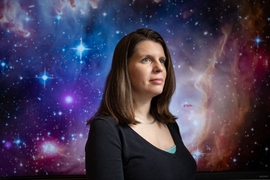
Anna Frebel is searching the stars for clues to the universe’s origins
More mit news.

Understanding why autism symptoms sometimes improve amid fever
Read full story →

School of Engineering welcomes new faculty

Study explains why the brain can robustly recognize images, even without color

Turning up the heat on next-generation semiconductors

Sarah Millholland receives 2024 Vera Rubin Early Career Award

A community collaboration for progress
- More news on MIT News homepage →
Massachusetts Institute of Technology 77 Massachusetts Avenue, Cambridge, MA, USA
- Map (opens in new window)
- Events (opens in new window)
- People (opens in new window)
- Careers (opens in new window)
- Accessibility
- Social Media Hub
- MIT on Facebook
- MIT on YouTube
- MIT on Instagram

MIT researchers locate three of the oldest stars in the universe hovering on outskirts of Milky Way Galaxy, study says
R esearchers at MIT found three of the oldest stars in the universe orbiting around the outskirts of the Milky Way Galaxy, according to a study published last week in the Monthly Notices of the Royal Astronomical Society .
“This is the end of the line; this is as good as it gets,” said Anna Frebel, an author on the study and a professor of physics at MIT. “My career is built on finding second-generation stars, but I have never published a paper claiming these are the oldest ones.”
About 13 billion years old, the stars, given the “endearing” name SASS, Small Accreted Stellar System stars, formed in small dwarf galaxies and are now located in the outer limits of the Milky Way, called the “halo,” which starts at about 10,000 light-years from Earth and extends to a million light-years away, Frebel said.
While the chemical compositions of the three stars indicate they are old, Frebel said the study, published on May 14, identified that the stars’ original dwarf galaxies were “eaten,” gobbled up through proximity and gravitational interactions , by the Milky Way. This process only happened during a short window of time 13 billion years ago, Frebel said, so the discovery pinpointed the stars’ old age that much more.
“This is really the most surefire way to say these are the oldest ones,” Frebel said. “It opens up this entire new field of looking at what is in the Milky Way right now but not of the Milky Way.”
Frebel, also the division head for astrophysics at MIT, has been researching what she calls “old stars,” or “13 billion-year-old stars,” for 20 years. In fall 2022, she started a class, Observational Stellar Archaeology, to help her undergraduate students gain research experience.
The research didn’t start by looking for anything “earthshattering,” Frebel said. She asked her students to look for something “very small” — “old stars” that barely had any traces of the chemical element barium. The element is usually found in “significant amounts” in stars, Frebel said.
“I like to push the boundaries and ask the question, how can you make so little?” Frebel said with a smile. “I had no idea what we actually found that there was more to the story.”
Digging through a binder filled with 15 years of Frebel’s unanalyzed “old star” data from the 6.5 meter Magellan Telescope in Chile, the students started looking for small amounts of the element. Quickly, they discovered three stars with low amounts of barium and another element strontium. Even better, the stars were orbiting in the wrong direction, indicating they must have come from a different galaxy, Frebel said.
“I had a hunch,” Frebel said. “I can read the tea leaves quite well.”
A freshman from the class continued working with Frebel, along with a second undergraduate and two other researchers. Over the last two years, the group has been “fine-tuning,” “fiddling,” and “revising” their findings, Frebel said.
The researchers published the study last week, but Frebel said this isn’t the end of the line for SASS stars, instead, it’s a new “framework” for other researchers. Already, the group has identified 65 other stars with similar chemical compositions as the first three.
“These three stars, they are special, but they’re not unique,” Frebel said. “One star is a discovery, two is a sample, and three is a population. When you find three stars doing the same thing in astronomy, it has meaning. It’s not random.”
Frebel plans to teach the class again this fall incorporating more “detective work.” The big question for not just Frebel, but most astronomers is: “What was the beginning?” Frebel said. Whether that be of the universe or the Milky Way Galaxy, the SASS stars might just provide an answer, Frebel said.
“[The stars] have preserved all this information from early on for 13 billion years for us because they’re just sitting there,” Frebel said. “Like the can of beans in the back of your cupboard, unless you crack it open or damage it somehow it just keeps sitting there.”


IMAGES
VIDEO
COMMENTS
New research puts age of universe at 26.7 billion years, nearly twice as old as previously believed. by Bernard Rizk, University of Ottawa. Credit: CC0 Public Domain. Our universe could be twice ...
Reinventing cosmology: New research puts age of universe at 26.7 -- not 13.7 -- billion years. ScienceDaily . Retrieved May 23, 2024 from www.sciencedaily.com / releases / 2023 / 07 / 230711133118.htm
"Our newly-devised model stretches the galaxy formation time by a several billion years, making the universe 26.7 billion years old, and not 13.7 as previously estimated," says author Rajendra Gupta, adjunct professor of physics in the Faculty of Science at the University of Ottawa. For years, astronomers and physicists have calculated the age of our universe by measuring the time elapsed ...
New research puts age of universe at 26.7 billion years, nearly twice as old as previously believed. Our universe could be twice as old as current estimates, according to a new study that ...
New research puts age of universe at 26.7 billion years, nearly twice as old as previously believed. Jul 13, 2023. A new way to measure the expansion rate of the universe: Redshift drift.
By University of Ottawa July 13, 2023. A new study suggests the universe might be 26.7 billion years old, almost double the widely accepted age of 13.7 billion years. The new model, incorporating Zwicky's tired light theory and Dirac's evolving coupling constants, could explain the existence of mature, small galaxies formed just 300 million ...
If the findings of this latest research prove accurate, the Big Bang may have taken place 26.7 billion years ago, making the actual age of the universe nearly twice as old as we thought. 'Internet ...
In 2021, thanks to new techniques and advances in technology, the age of our universe was thus estimated at 13.797 billion years using the Lambda-CDM concordance model. However, many scientists have been puzzled by the existence of stars like the Methuselah that appear to be older than the estimated age of our universe and by the discovery of ...
News Release 11-Jul-2023. Reinventing cosmology: uOttawa research puts age of universe at 26.7 — not 13.7 — billion years. Peer-Reviewed Publication. University of Ottawa. image: "Our newly ...
"Our newly-devised model stretches the galaxy formation time by a several billion years, making the universe 26.7 billion years old, and not 13.7 as previously estimated," says author Rajendra Gupta, adjunct professor of physics in the Faculty of Science at the University of Ottawa.. For years, astronomers and physicists have calculated the age of our universe by measuring the time elapsed ...
The age of our universe could be twice as old as previously estimated, according to a new study that challenges the dominant cosmological model and sh. ... New research puts age of universe at 26.7 — not 13.7 — billion years Reinventing cosmology: New research puts age of universe at 26.7 — not 13.7 — billion years Sam Billings ...
Thus, using the Lambda-CDM concordance model, the age of our universe was estimated in 2021 to be 13.797 billion years, thanks to new methodologies and technological advancements. However, many scientists have been puzzled by the existence of stars that are older than the estimated age of our universe and by the discovery of early galaxies.
University of Ottawa adjunct professor Rajendra Gupta has calculated that it is, in fact, 26.7 billion years old - nearly twice as old as the current accepted model. But experts warn us to be ...
In 2021, the prevailing Lambda-CDM concordance model estimated the universe's age at 13.797 billion years. However, the existence of stars like Methuselah, which appear older than the estimated ...
This research around studying space and our universe sheds light on the "impossible early galaxy problem." Age of the universe estimated at 26.7 billion years According to the study's author, Rajendra Gupta, a physics professor at the University of Ottawa, their newly-devised model indicates that the universe is 26.7 billion years old ...
Reinventing cosmology: New research puts age of universe at 26.7 — not 13.7 — billion years. Our universe could be twice as old as current estimates, according to a new study that challenges the dominant cosmological model and sheds new light on the so-called "impossible early galaxy problem.". "Our newly-devised model stretches the ...
New research puts age of universe at 26.7 billion years, nearly twice as old as previously believed Space phys.org Open. Archived post. New comments cannot be posted and votes cannot be cast. ... The "age of the universe" is mostly meaningless anyways and can only ever be a thought exercise. There's no absolute clock as the passage of time is ...
Astronomers determine the age of three mysterious baby stars at the heart of the Milky Way. Research helps power plants recycle water using wastewater from oil and gas mining. New genetic research uncovers the lives of Bornean hunter-gatherers ...
Our universe could possibly be twice as previous as present estimates, in line with a brand new research that challenges the dominant cosmological mannequin
Astrophysicist Risa Wechsler studies the evolution of the universe.. She says that our understanding of how the universe formed and how it will change over time is changing as new technologies for seeing and measuring space come online, like a new high-resolution camera that can quickly map the full sky to see everything that moves, or new spectrographs that will map the cosmos in 3D and ...
Page 1 of 2 - New research puts age of universe at 26.7 billion years, nearly twice as old as previously believed - posted in Astro Art, Books, Websites & Other Media: Our universe could be twice as old as current estimates, according to a new study that challenges the dominant cosmological model and sheds new light on the so-called impossible early galaxy problem. Our newly-devised model ...
New research puts age of universe at 26.7 billion years, nearly twice as old as previously believed. Our universe could be twice as old as current estimates, according to a new study that ...
on July 13, 2023. Our universe may be twice as old as current estimates, according to new research from the University of Ottawa. Challenging the dominant cosmological models and solving the 'impossible early galaxy' problem without requiring the existence of primordial black hole seeds, massive Population III stars, etc.
A new theory of quantum gravity, which attempts to unite quantum physics with Einstein's relativity, could help solve the puzzle of the universe's expansion, a theoretical paper suggests.
A Universe made of ~30% matter and ~70% dark energy (fuchsia) is the best fit to the data, and gives an age of the Universe of 13.8 billion years. Credit : Geek3/Wikimedia Commons
Reinventing cosmology: New research puts age of universe at 26.7 — not 13.7 — billion years Team Science-Nature July 22, 2023 Our universe could be twice as old as current estimates, according to a new study that challenges the dominant cosmological model and sheds new light on the so-called "impossible early galaxy problem."
MIT astronomers discovered three of the oldest stars in the universe, and they live in our own galactic neighborhood. The stars are in the Milky Way's "halo" — the cloud of stars that envelopes the entire main galactic disk — and they appear to have formed between 12 and 13 billion years ago, when the very first galaxies were taking shape.
R esearchers at MIT found three of the oldest stars in the universe orbiting around the outskirts of the Milky Way Galaxy, according to a study published last week in the Monthly Notices of the ...
The Big Bang Theory suggests that about 13.8 billion years ago, the entire universe began from a dense, extremely hot single spot according to the Center for Astrophysics. This spot is known as the "singularity," and it marks the beginning of what we now know as space, time, and matter.